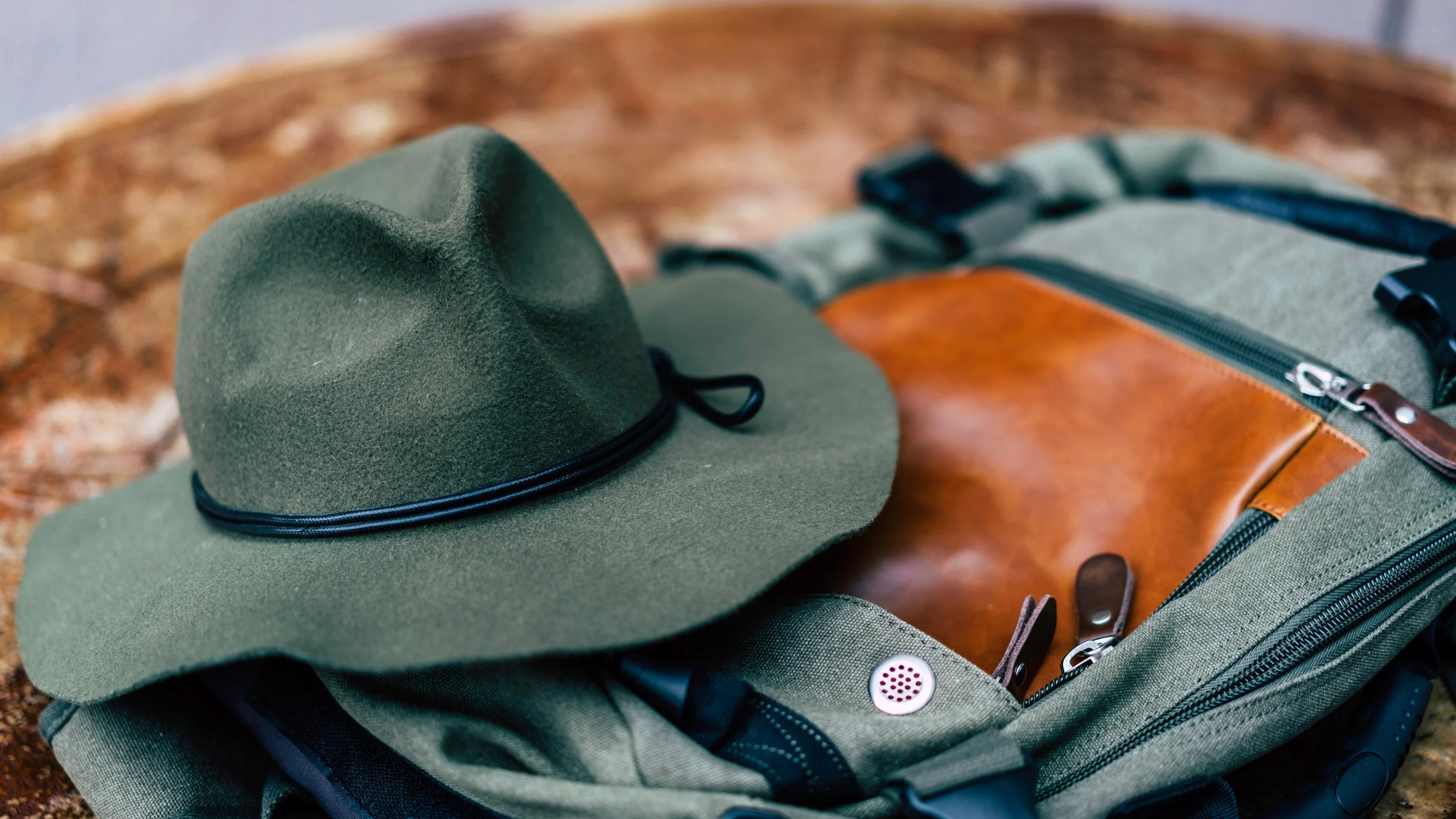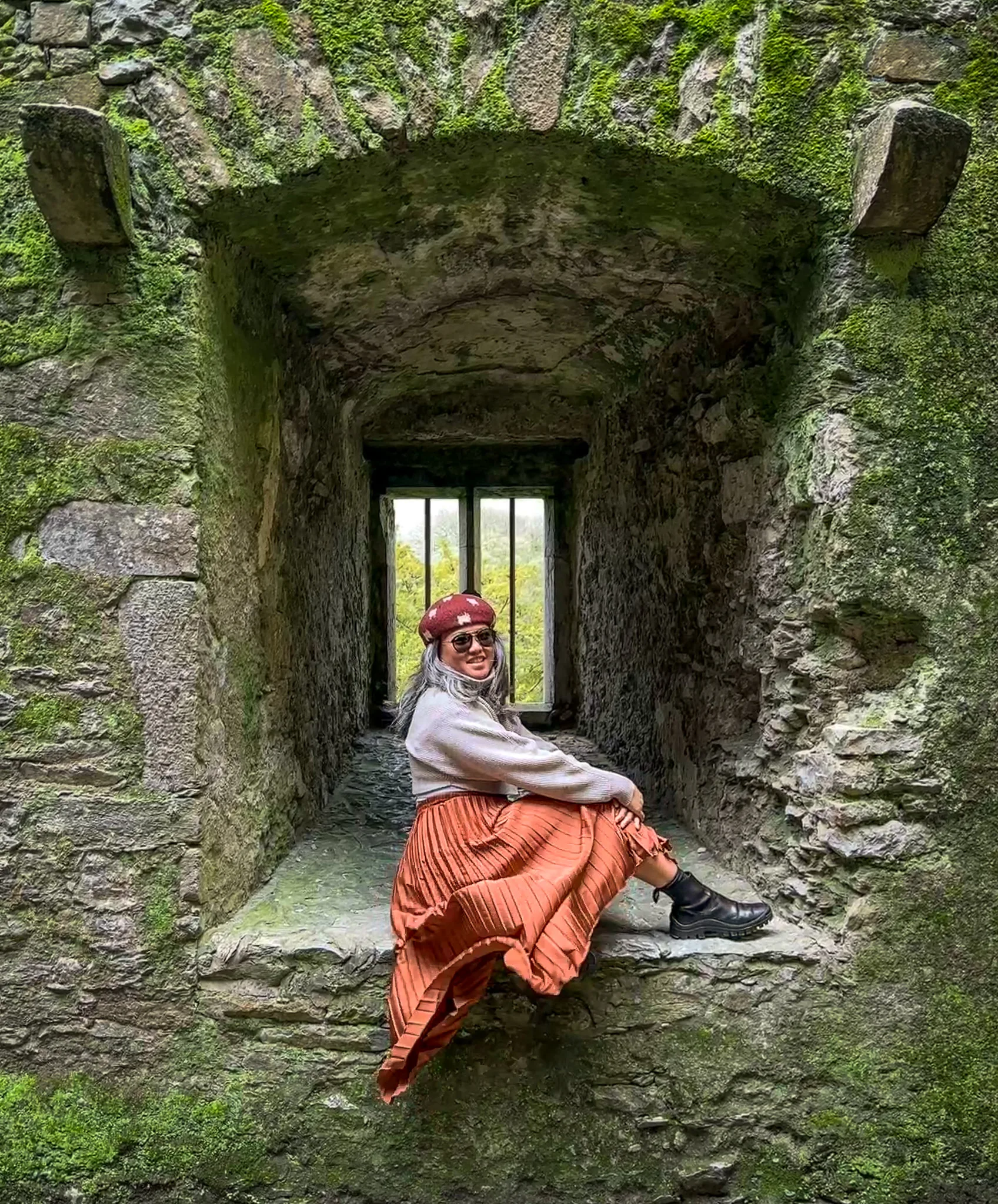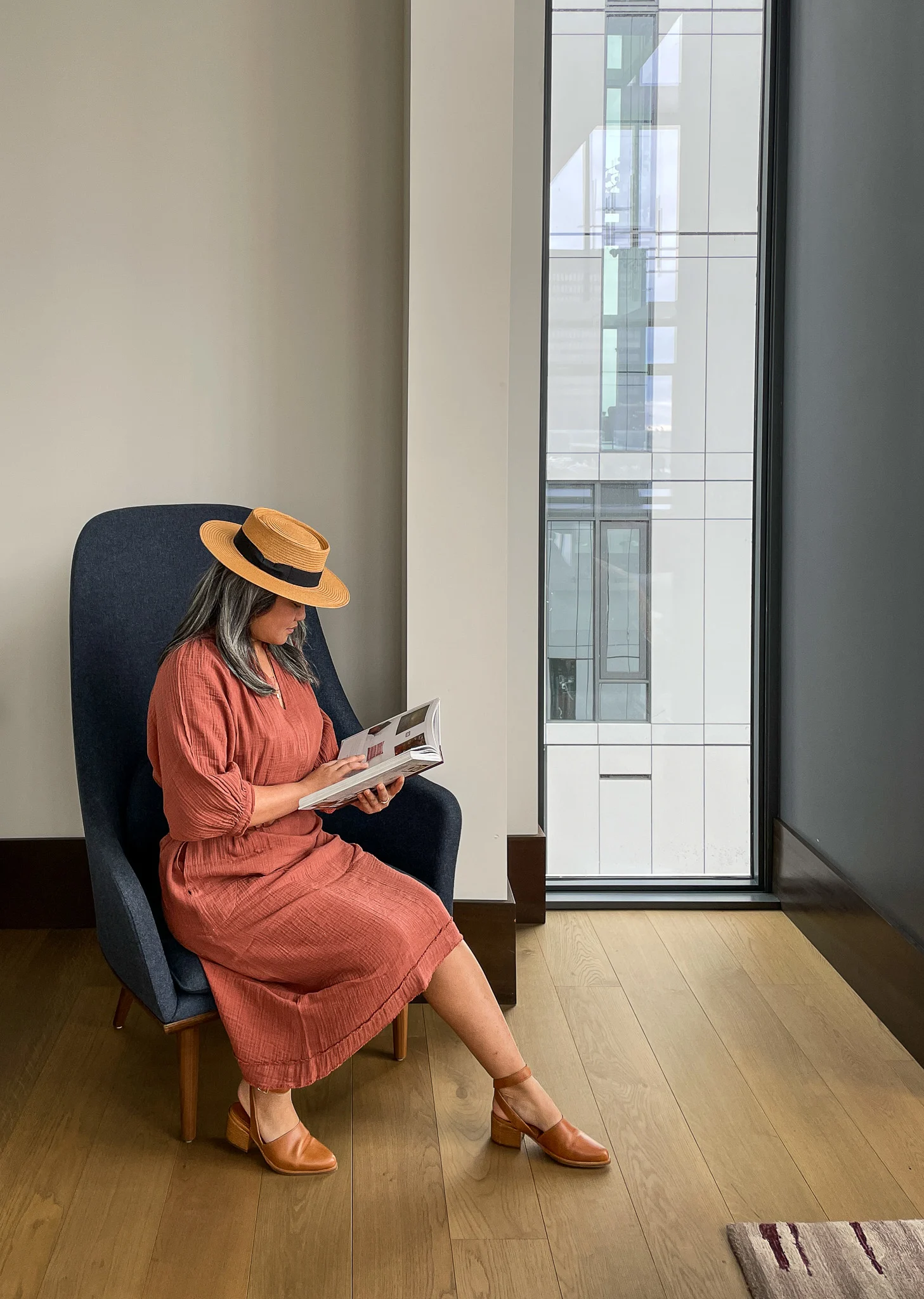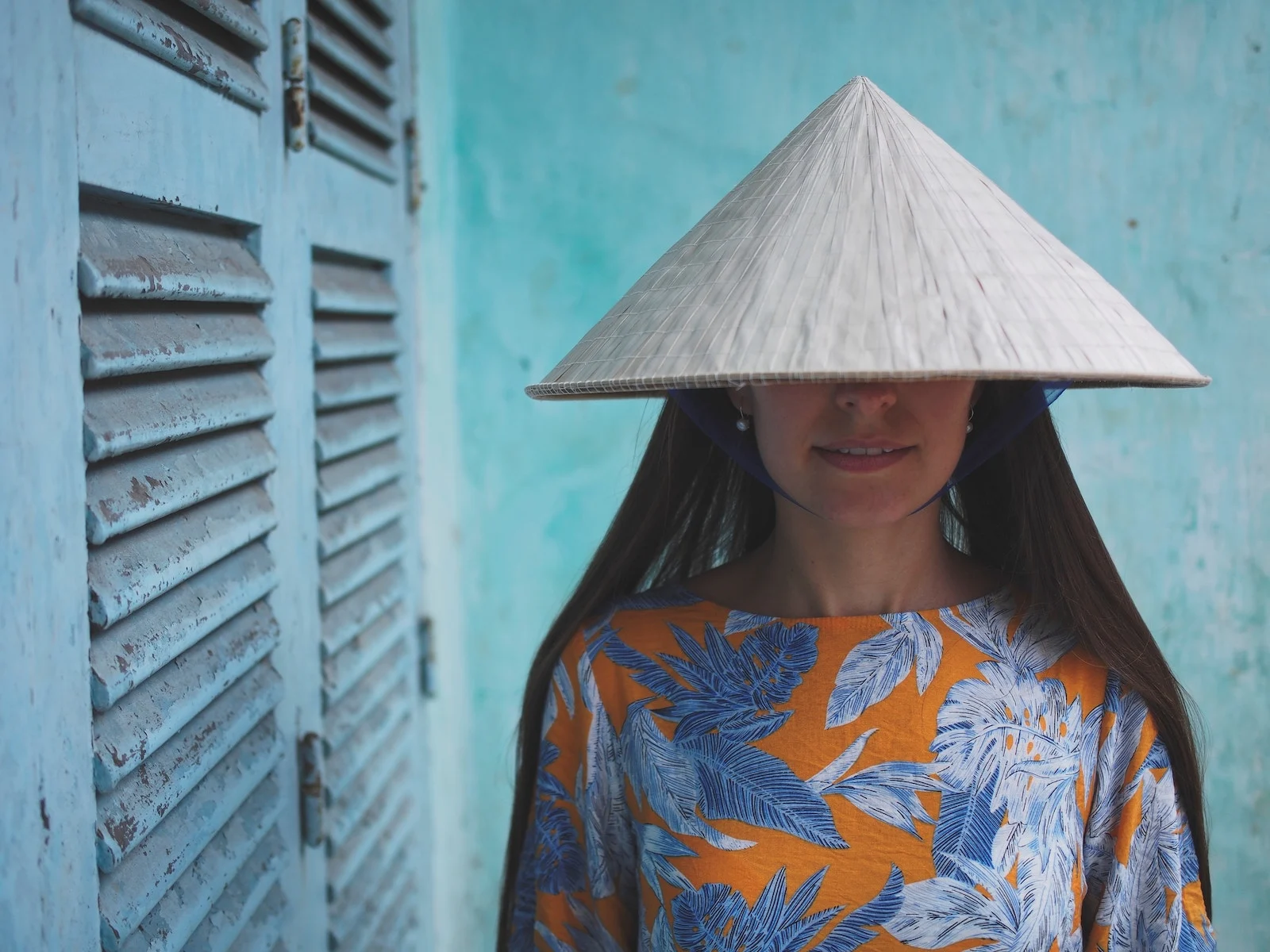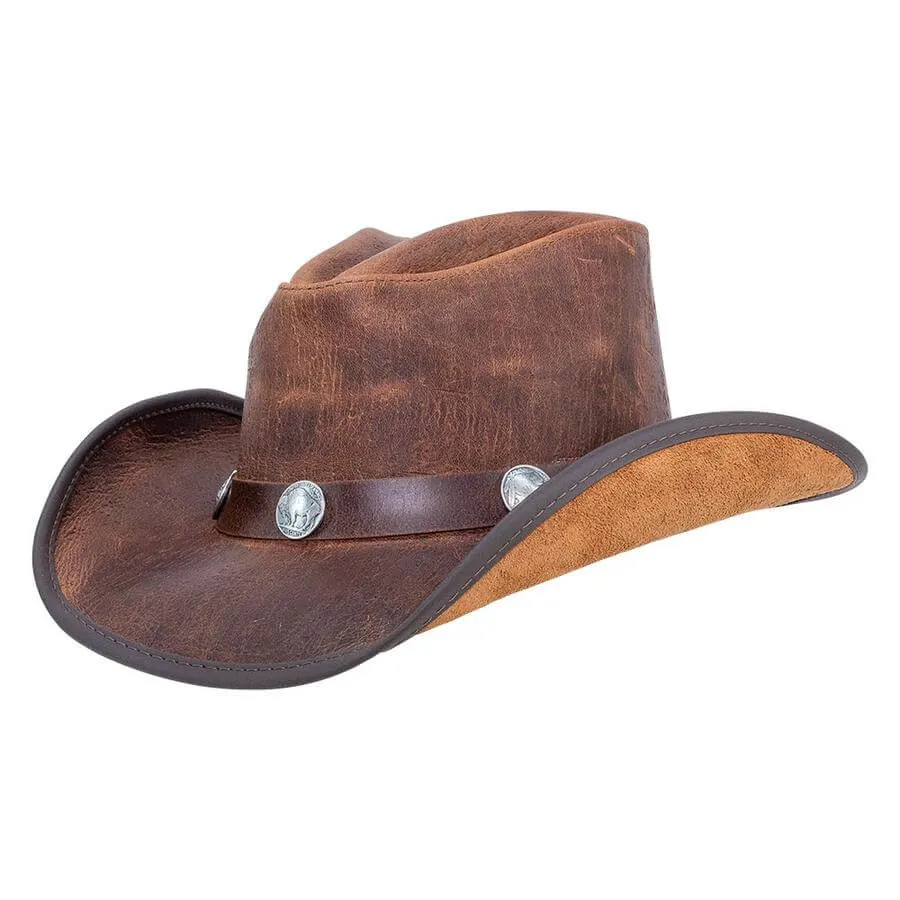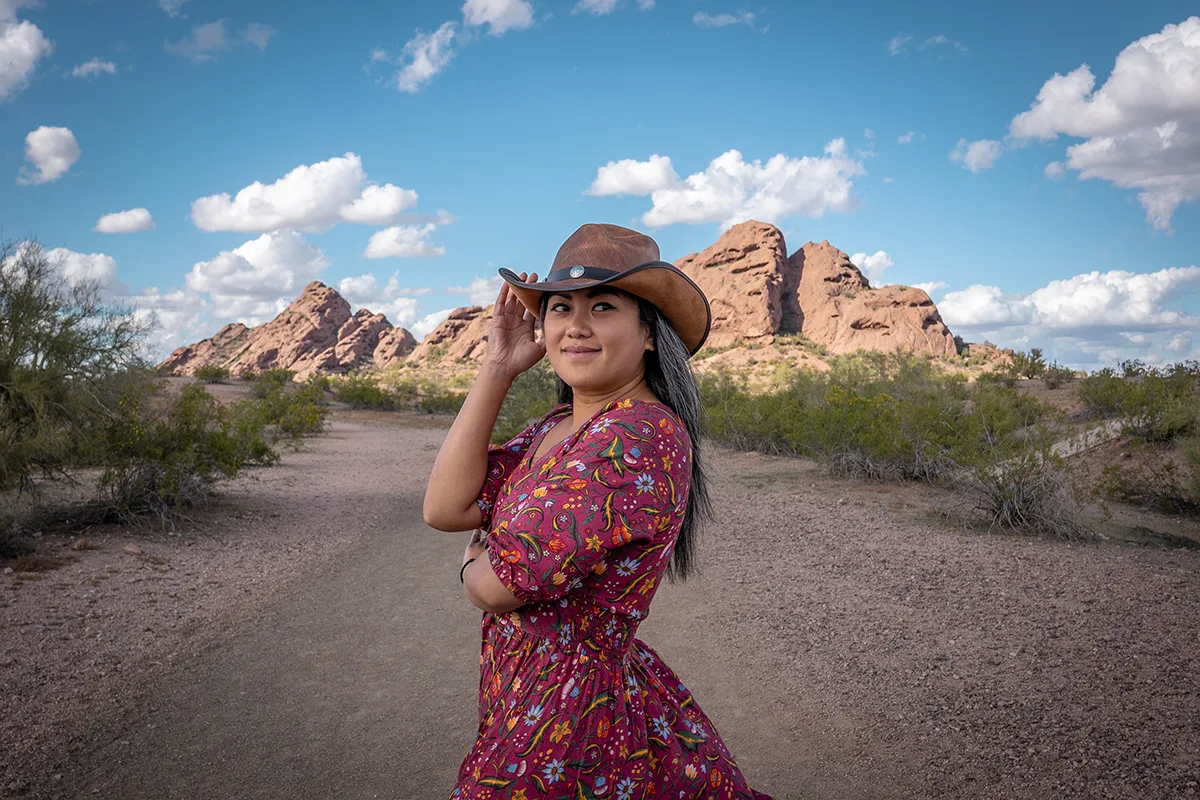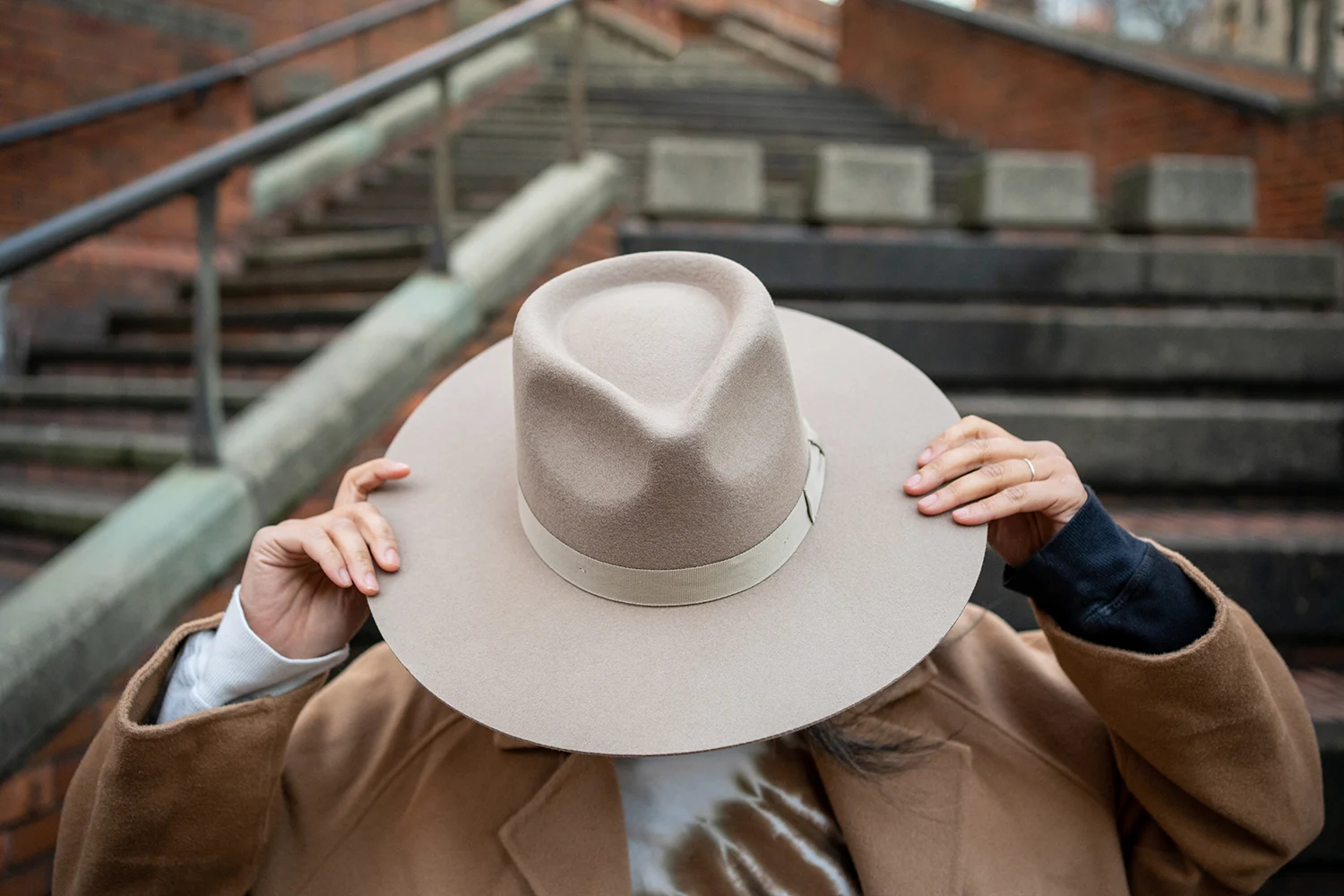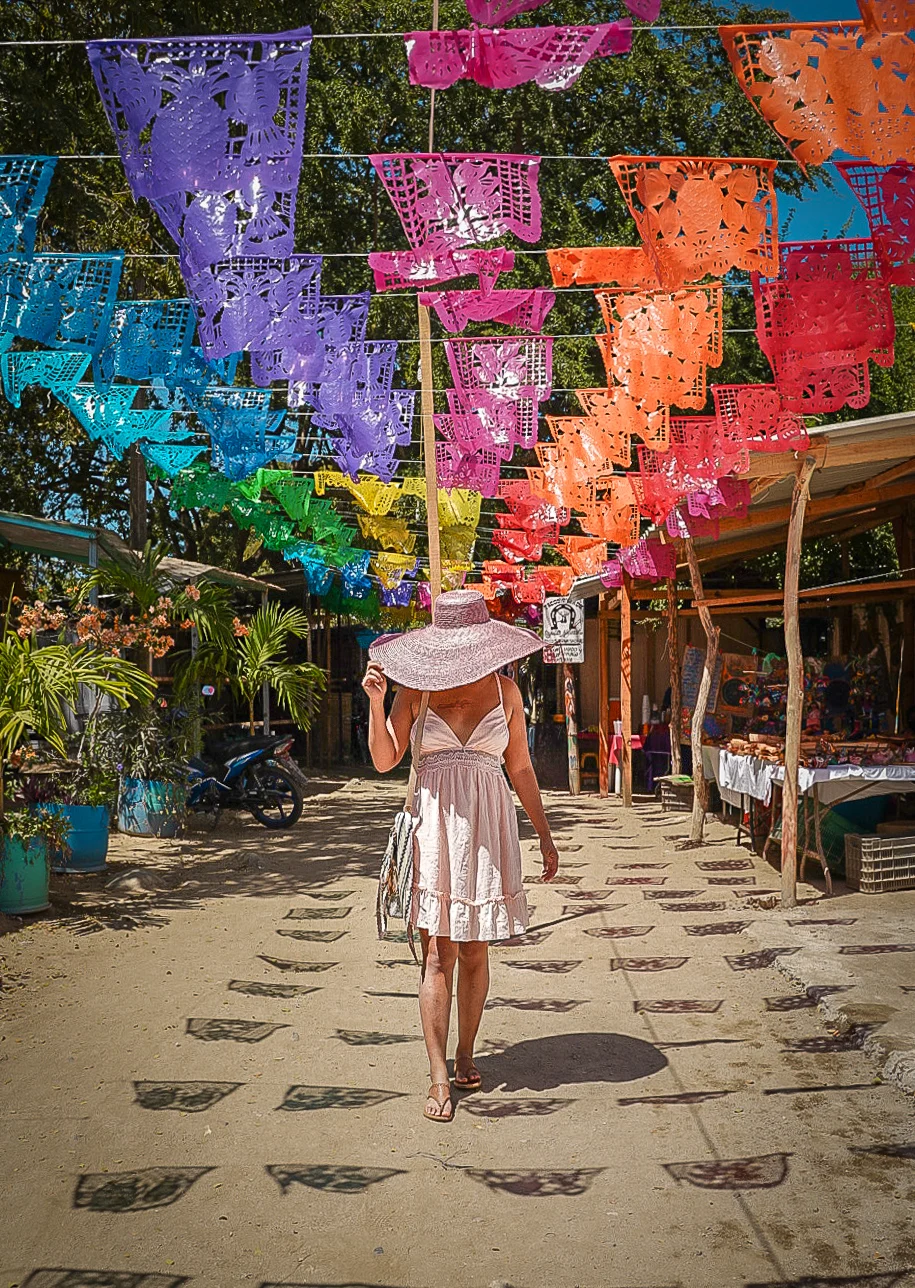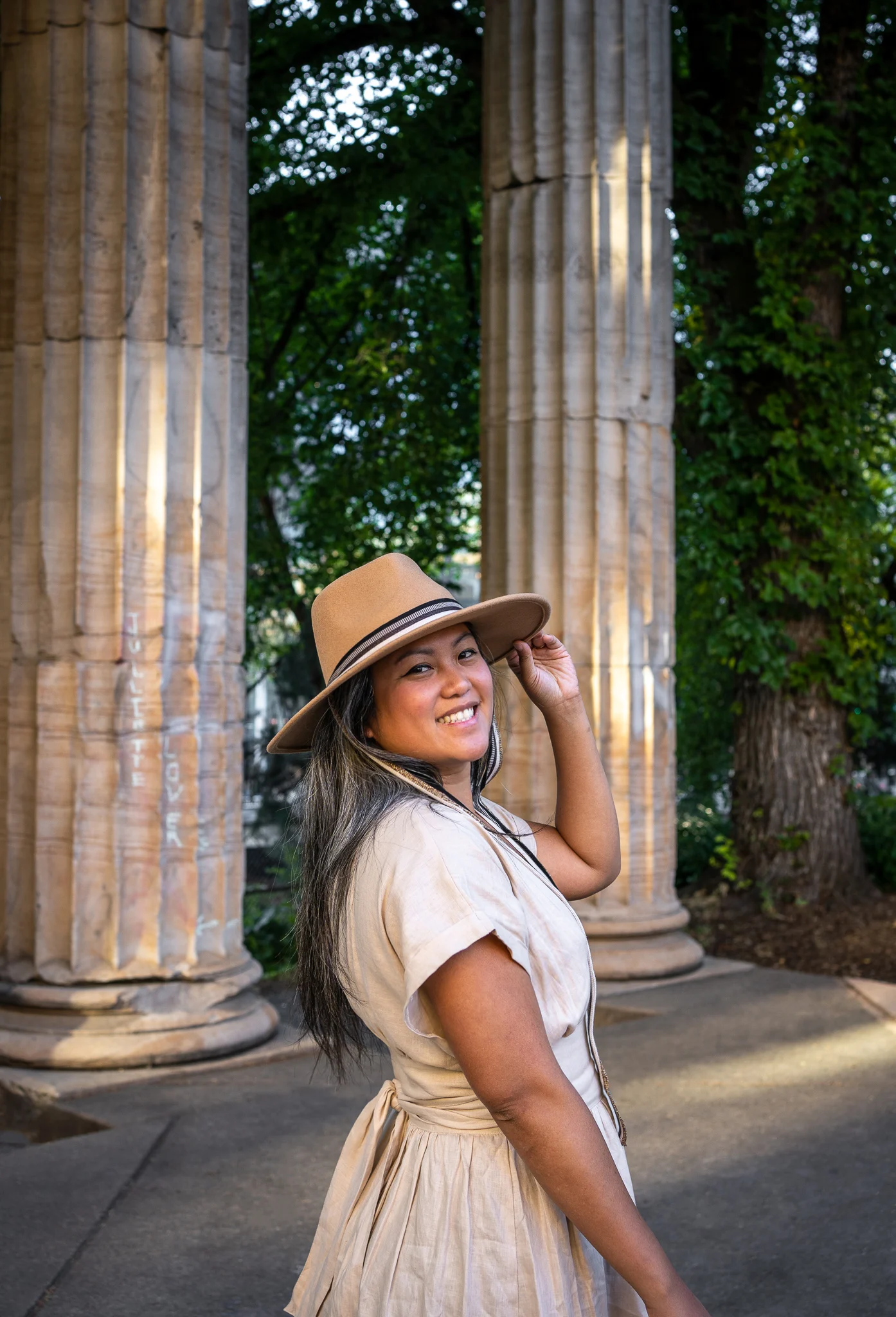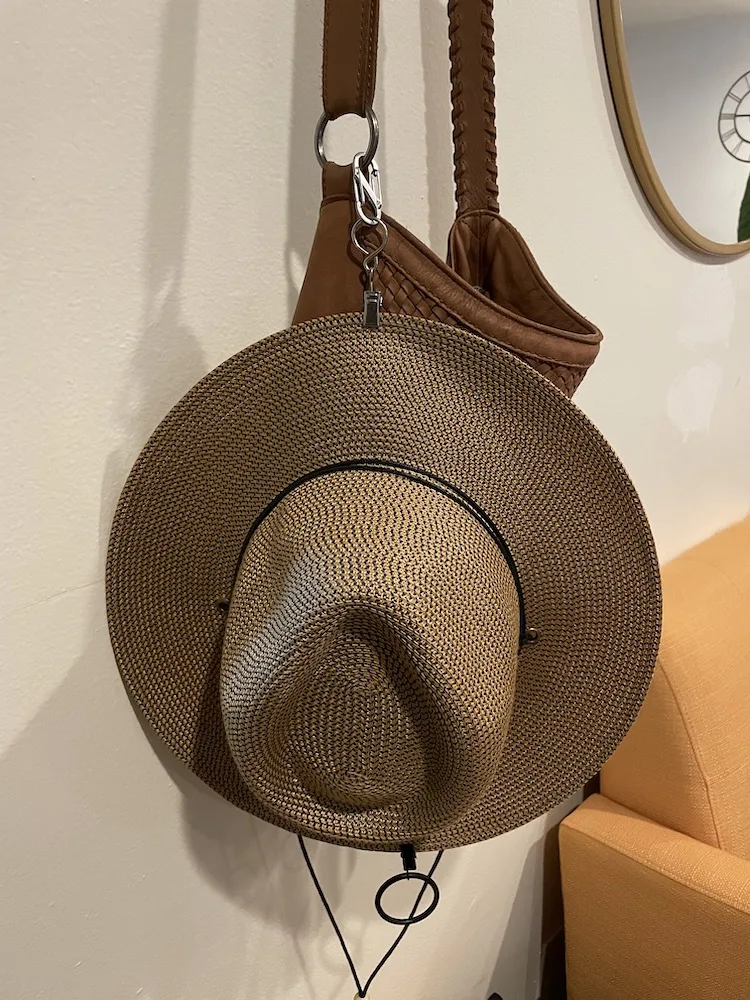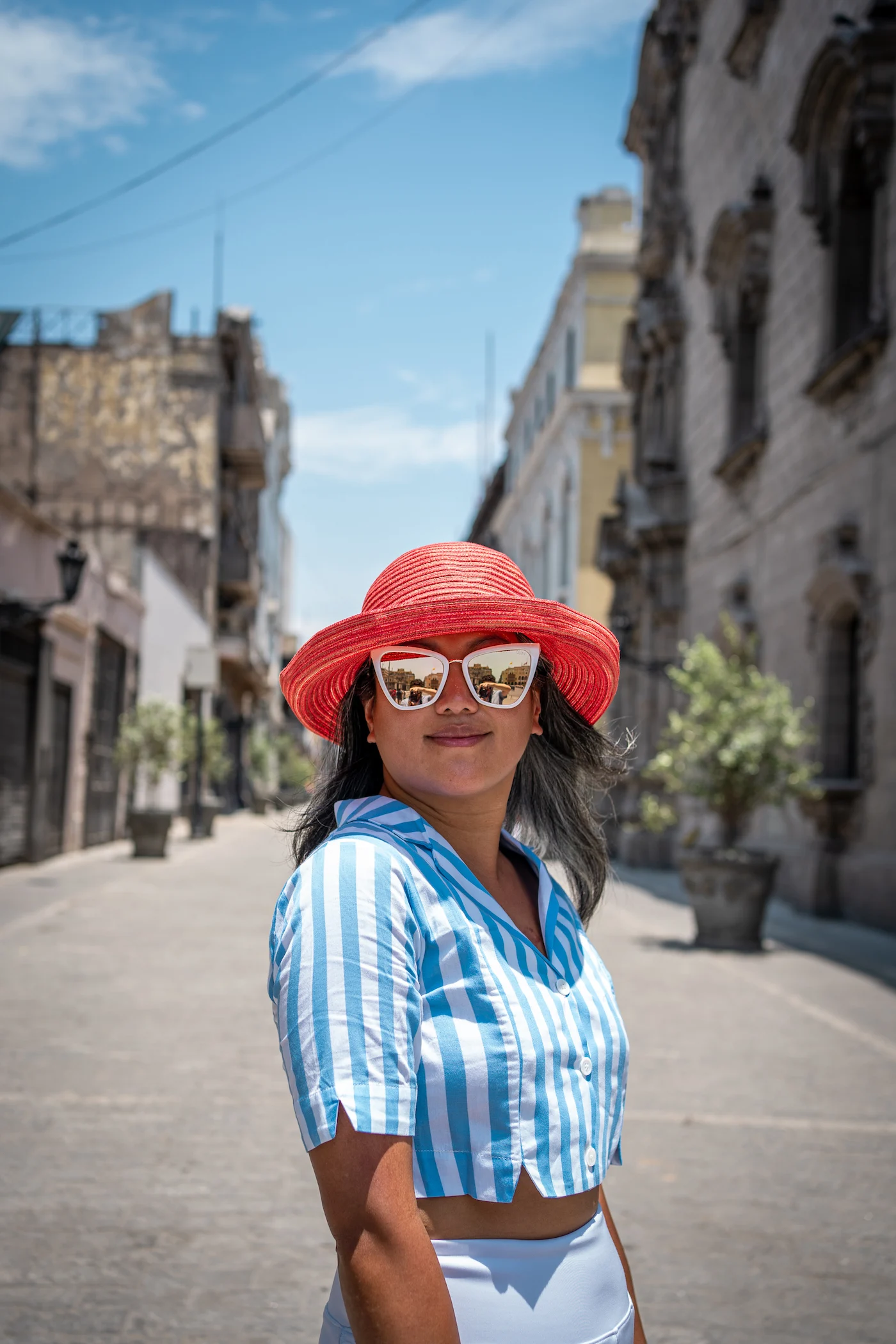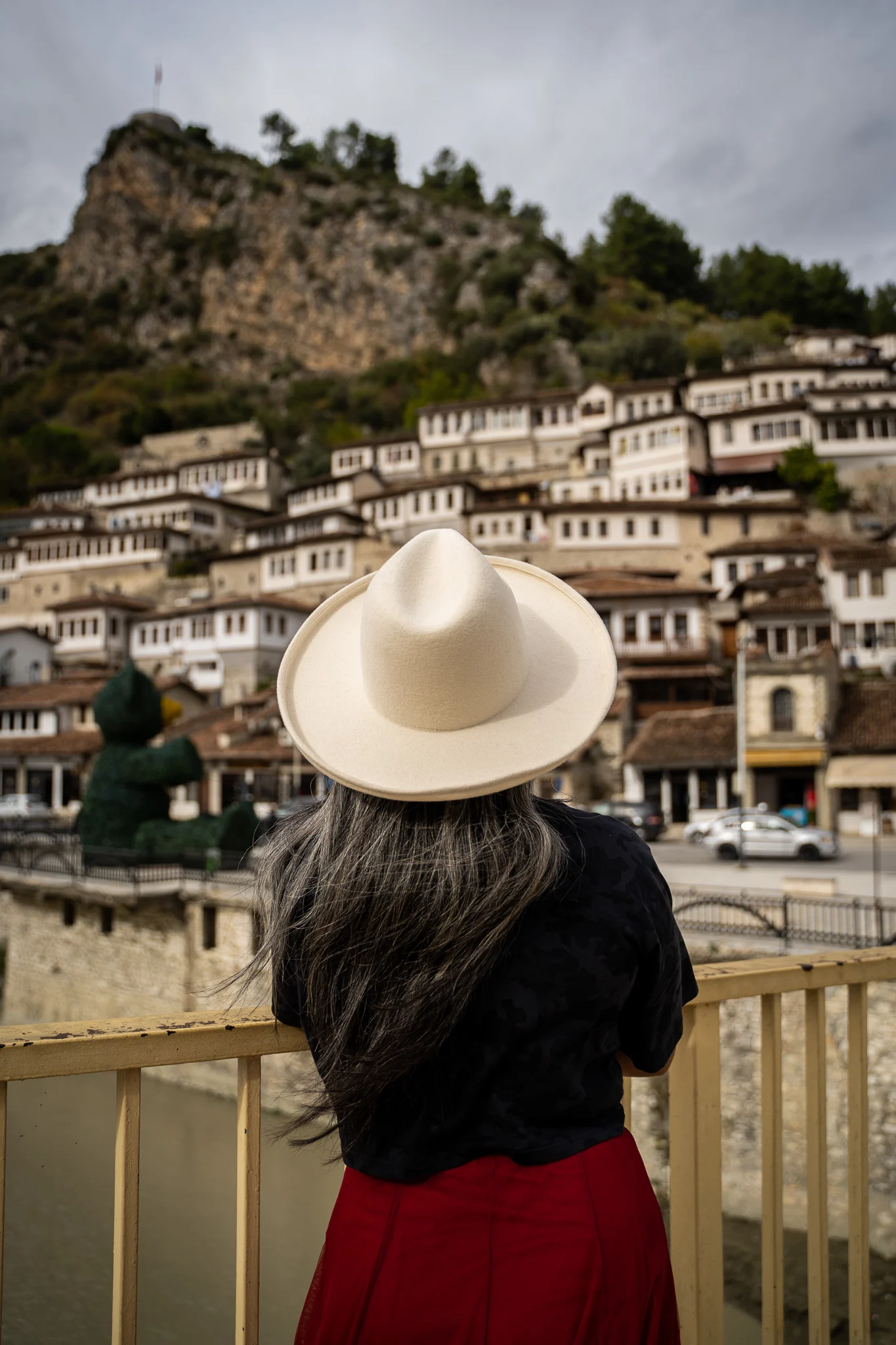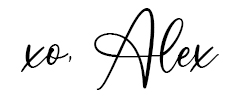Updated: 3/30/2023 | Hat Glossary and Hat Styles
Want to learn more about hats? Here is our glossary on hat-related terms that you may want to know if you’re interested in learning more. We also included hat styles that you may want to try.
A great way to navigate through this document is to scroll up and use the Table of Contents feature to get to a specific term.
Hat Glossary
Apple Cap
The apple cap is simply a larger version of the newsboy cap as described further down the page. It is divided into 8 panels and finished with a sewn button on top.
Ascot Cap
The Ascot cap is a variation of the ivy and flat caps and is characterized by a more rounded crown profile that is often stiffer and made from wool or felt.
Balaclava
The Balaclava (or balaklava) is a cloth headpiece that covers the entire head, neck, and nape leaving only the face, or parts of the face (ie. the eyes, nose, and mouth), exposed. A balaclava may also be referred to as a balaclava helmet, helmet liner (military), or ski mask.
According to Richard Rutt’s History of Handknitting, the first recorded use of the term “Balaclava helmet” did not appear until 1881 even though its origin is the Crimean War of 1853 to 1856. Balaclavas were made for Russian soldiers to stay warm during war.
Originally knitted of wool, today they are not necessarily knitted and can be made from a host of materials including microfiber, neoprene, cotton, spandex, fleece and more.
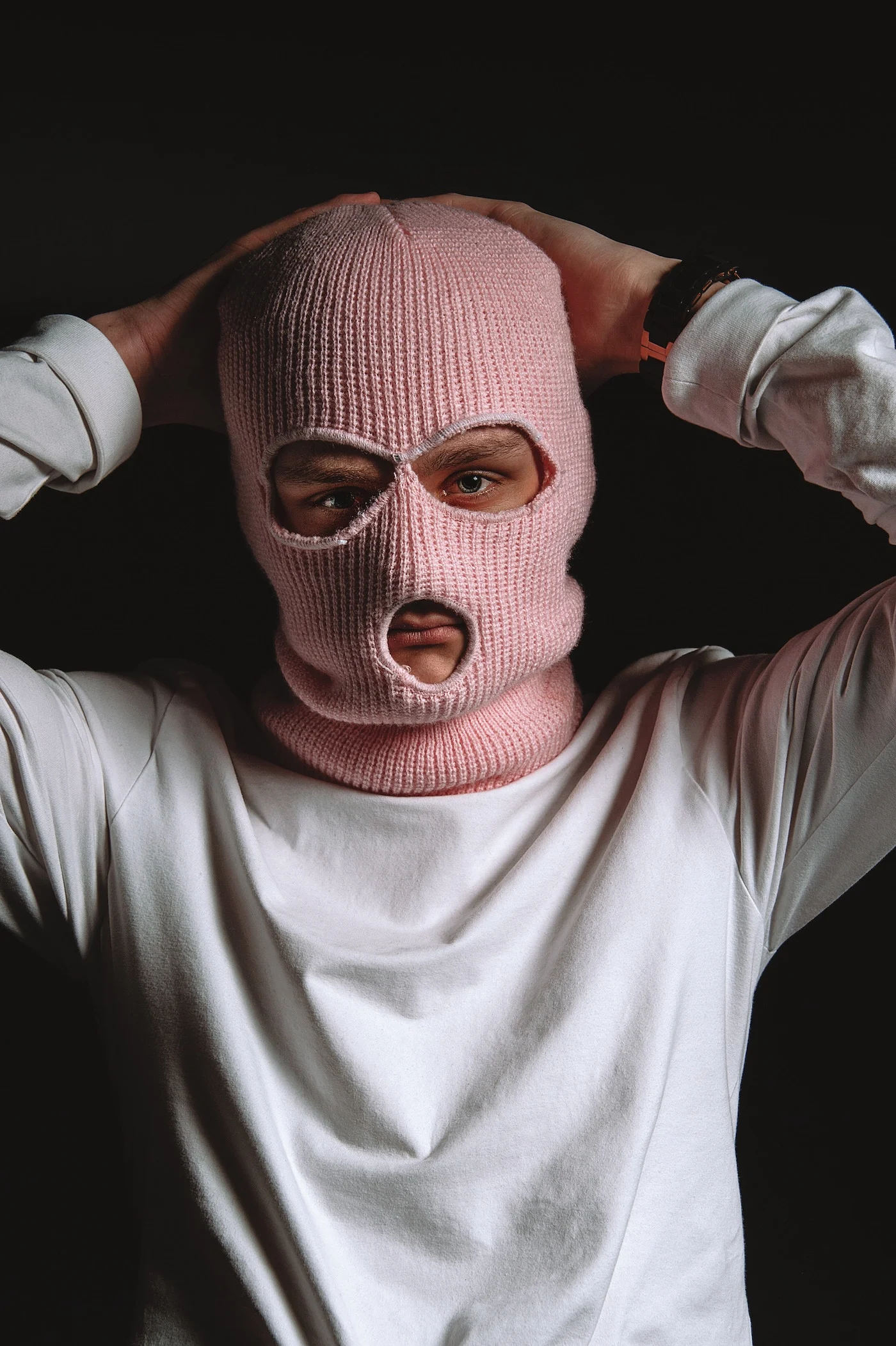
Knit Balaclava
Baseball Cap
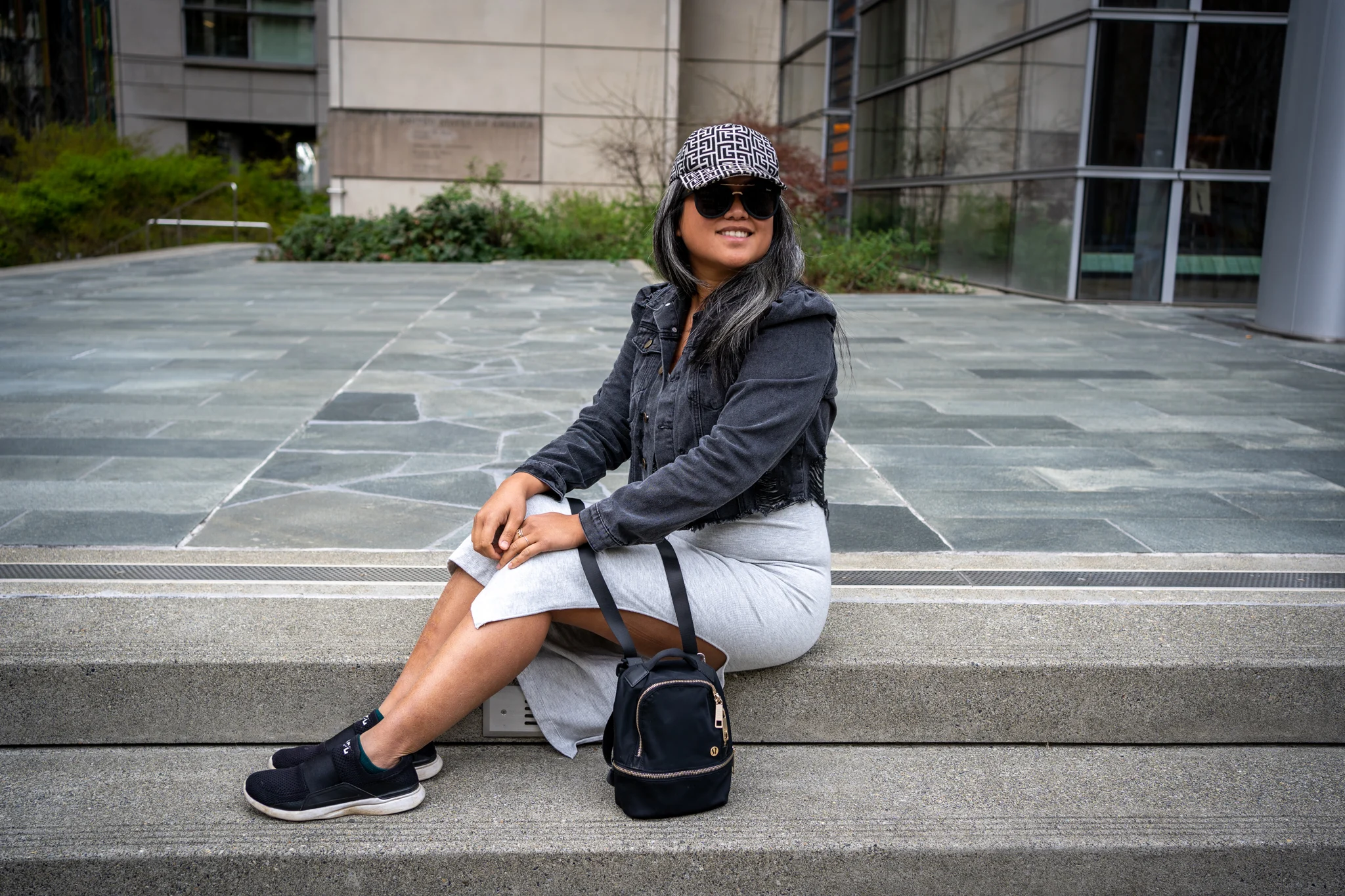
Balmain Baseball Cap
The baseball cap is a classic American style that is commonly seen worldwide. The simple, casual, and easy-to-wear headwear is packable and is unisex.
They have a short to medium size bill that can be curved or flat in front that is normally attached to 6-quarter panels ending in a button at the top. The crown is a round shape and often comes with an adjustable hat band and hole that is great for looping a ponytail through.
Popular brands with Baseball Caps: Gigi Pip | Lack of Color | lululemon | Nike | San Diego Hat Company | Under Armour
Bash or Crease
Bashes (creases) are dents intentionally made in the upper crown of a hat. These features are most noticeable on fedoras, trilbies, and cowboy hats.
Some of the most common bash shapes are the center dent, the diamond shape, the teardrop, the cattleman, and the telescope.
Beanie
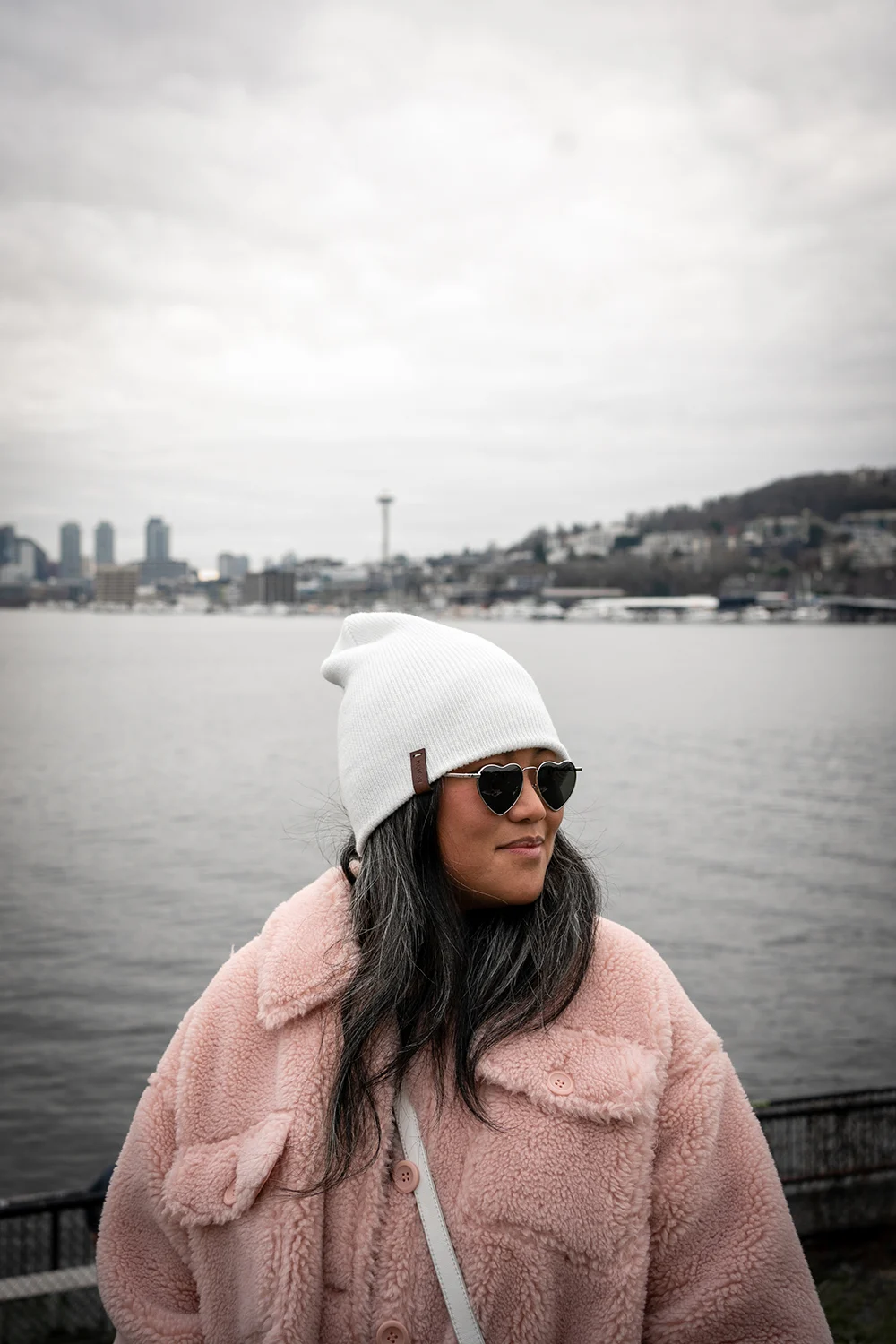
Trendhim Beanie
The beanie is a knitted close-fitting cap typically made of wool or cotton created to provide warmth to your head in cold weather. Throughout the years many different variants have been created such as the long stocking cap. This style is the same as the beanie just with a longer crown meant to be too large and hang off the top or side more for the style than warmth. Beanies are also known as a Stocking Cap and Watch Cap.
Popular brands with Cloche hats: American Hat Makers | Gigi Pip | Lack of Color | lululemon | Peili Hats | San Diego Hat Company | Trendhim
Beehive Hat
The Beehive hat is a variation of the pillbox hat. Created in the 1960s, it was named for its shape, as was the popular high-rise hairstyle of the time. Always brimless, the beehive hat fits the head as a pillbox would, but rises high, sometimes into a rounded point, sometimes flatter.
Beehive hats came in a wide variety of materials.
Beret
The Beret is a round, soft, flat crowned style with extra material around the edges for a slight “poof” and mushroom-like shape.
They are commonly made of wool, cotton, and acrylic fibers and are stereotypically associated with painters, artists, and Parisians. The black beret was once considered the national cap of France. If you travel to Paris, you will see berets of all colors being sold throughout the city.
Many times they have what can be described as having a short apple stem coming out of the top. Berets do not have brims.
They can be worn in many different ways, either flat across the top of the head, or hanging to one side or the other.
They have roots in militaristic garb, and a Special Forces division even uses the term in their name, the “Green Berets”.
It became a fashion staple for women in the 20th century, having been worn by movie star Greta Garbo and infamous gangster Bonnie Parker in the 1920s. A raspberry-colored beret was immortalized in a 1985 song by Prince and the beret remains a must-have in many wardrobes today.
Popular brands with Beret hats: American Hat Makers | Brixton | Gigi Pip | Lack of Color | Peili Hats | San Diego Hat Company
Bill
Another word for the brim. The stiff protruding part at the front of a cap that shields your eyes. May also be referred to as a visor.
Boater Hat
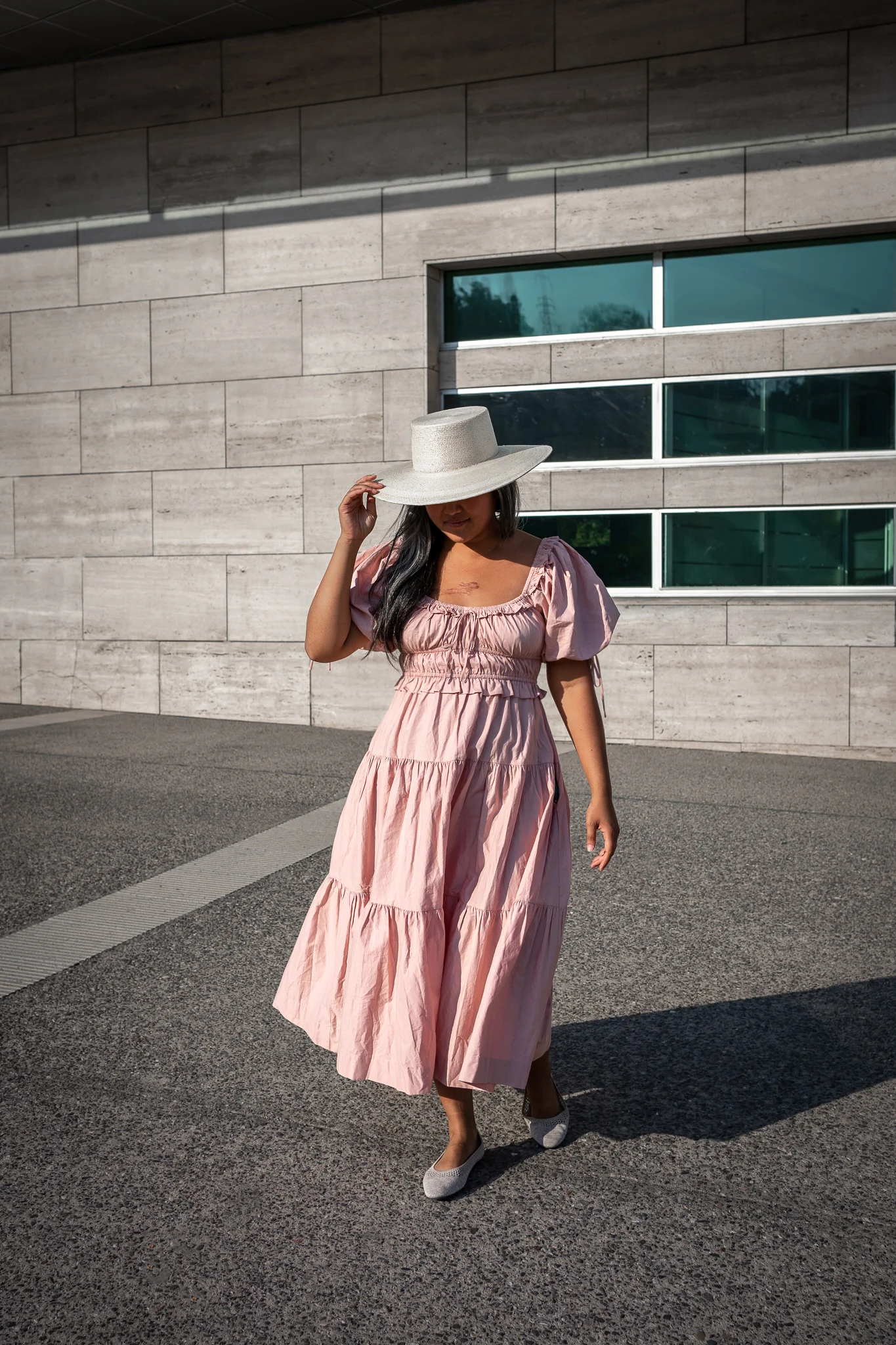
ASN Straw Cordobe/Boater Hat
The boater (or Skimmer, Sennit and Sailor) hat is a style that is commonly associated with barbershop quartets, proper boating or sailing events, and men’s formal summer wear from the late 1800’s to mid 1900’s.
It is made of straw with a small to medium sized brim, a shorter crown, and a flat top. It is typically embellished with a ribbon around the crown.
Hats worn by the Gondoliers in the canals of Venice are very similar with the exception that they normally have a thinner and wider brim, and the ribbon extends off the back of the hat in two tails.
The traditional boater hat was made of stiff sennit straw (flat, braided cordage) and has a flat top, a shallow, oval crown, and a flat brim. The crown of the hat is usually decorated with a grosgrain ribbon of black or university stripe with a flattened bow.
As you might expect, the boater hat takes its name from its initial association with the sport of boating and, because of this, it was originally considered to be strictly summer headwear. The boater is always made in natural shades and is a popular choice of barbershop quartets, politicians, British butchers and costermongers, and vaudeville performers.
There is also a deep-brimmed boater variation worn by English public school children called a Harrow hat. The boater hat was worn as early as the 1860s by both women and children but did not truly come into fashion for men until around the 1880s. Although it remained fashionable through the 1930s, it began losing popularity to both the Panama and the trilby after World War I.
The boater experienced a small resurgence in popularity in the mid-1950s when the soft-shoulder “Ivy look” for menswear came back into fashion. It is worn correctly with either a suit or a sport jacket and, when sporting a black band, it may be worn with a warm-weather dinner jacket.
Popular brands with Boater hats: ASN | American Hat Makers | Gigi Pip | Lack of Color | Peili Hats | San Diego Hat Company
Bonnet
A bonnet is a woman’s or child’s hat tied under the chin and with a brim framing the face. It’s typically made of cotton and soft cloth that easily covers the head.
Boonie Hat
A floppy, wide-brimmed hat made from cotton, twill, or canvas. They originated during the Vietnam War when they were worn by soldiers.
Bowler Hat
The bowler hat is an iconic style that is typically seen in movies set in the 1800’s and early 1900’s . Bowler hats cannot be mistaken. They are typically a hard felt hat with a short brim of around 2 inches and a rounded crown.
The bowler or derby hat is generally made of a hard, dark felt – usually black or brown – but can also be made of stiff fur.
The basic style features a bowl-shaped crown and a short circular brim with a slight curl. While the color and materials vary little, there are variations to the shapes and styles of the bowler, including the young men’s lower-crowned derby, the ventilated ‘Dunlap,’ and the flat-topped derby which was a favorite of famed American financier J.P. Morgan and also of Winston Churchill.
This hat style was invented in 1849 in England as a bowler but is often called a derby in the United States due to its association with equestrian pastimes and sporting events, particularly the Kentucky Derby. The bowler hat was in its fashion heyday in the early part of the 20th century but lost popularity when a more casual ‘soft hat’ attitude crept into men’s fashions after World War I.
Over the years, there have been many famous bowler wearers – such Charlie Chaplin and Stan Laurel – and the hat is still worn today for many equestrian events. It was also featured as part of Alex’s Droogs uniform in Clockwork Orange.
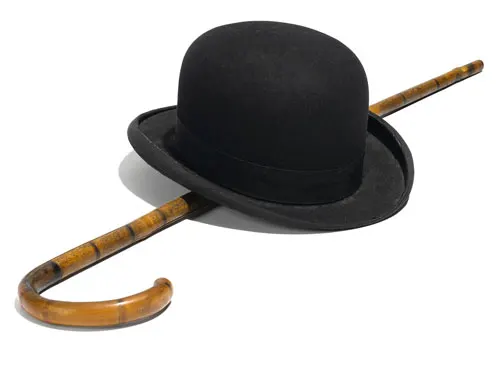
Breton
The Breton became popular with the 1960s mod look. It features a low crown, fitted to the head, with a wide, upturned brim. It is worn toward the back of the head. Breton hats can be crafted from many different fabrics that hold their shape. They tend to have few embellishments. This style was brought to popularity by actress Marlo Thomas in the 1960s hit TV show That Girl.
Bridal Hats – Bridal Headpieces
Bridal hats are typically small and most often white or cream. They are similar to a fascinator, but intended specifically for weddings. Bridal hats often have an attached veil, decorative netting, or tulle, and are sometimes decorated with feathers, pearls, rhinestones, or crystals.
Bridal headpieces are any decorative accessory that covers or is attached to the bride’s hair. This could be an ornate antique hair comb, a crystal tiara, fresh flowers with a veil attached, or even a simple Chantilly-lace veil placed over the head.
Brim
The brim is the portion of the hat that projects out around the crown and if large enough, shades the face. A brim can be very wide as on sun hats or very narrow as on most pork pie hats. It can be rolled as on a breton hat, sculpted and firm as on a derby, or unstructured and loose as on a floppy hat.
Bucket Hat
The bucket hat (also known as the “boonie” and Irish country hat) is a hat style originally made popular in the Vietnam War. It is comprised most often of cotton/twill/polyester/canvas and is a soft wide brimmed hat that can be rolled up and easily packed.
It features a flat crown on top, a wide floppy brim, a chinstrap, and sometimes has sewn-in loops around the crown to stow small pieces of gear. The most common brim size for this hat is between 2.5 – 3.5 inches.
Bucket hats became popular for country life and outdoor sports such as fishing or hiking.
The softer and more pliable Irish tweed hats were still worn by men through the 1970s.
Rappers adopted the style in the 1980s and the popularity continued as street fashion through the 1990s. Bucket hats are still being worn today for fashion shows, and at concerts and festivals, both by men and women.
Popular brands with Bucket hats: Augustine | Gigi Pip | Lack of Color | lululemon | Nike | Peili Hats | San Diego Hat Company | Under Armour
Calot
The calot (French for cap) hat originated in 16th century France as a Juliet cap, named after Shakespeare’s character. Juliet caps were small, openwork styles and were usually lavishly embellished.
The calot, a 20th century revival of the Juliet cap, typically has a round crown and no brim and fits closely to the head, off the wearer’s face. The style became quite popular with European royals as a daytime hat. Juliet caps were and still are popular as evening and bridal wear.
Casque
A casque is a very close-fitting cap that wraps around the head to frame the wearer’s face. They are often very decorative, with feathers, ornate leaves, or floral arrangements.
Cartwheel Hat
The cartwheel (pancake, platter) hat has a flat, shallow crown and a wide, stiff brim. When seen above it resembles a wagon wheel.
In the late 1930s it was seen on resort beaches and was often featured on brides with an open crown. This type of hat was often used in the late 1940s and early 1950s as an accessory to Dior’s New Look, as it provided visual balance to the wide skirts.
In the 1950s cartwheels were used in the evening as cocktail hats and lavishly trimmed with feathers and flowers.
Chin Strap
A chin strap or chin cord helps to secure a hat and keep it in place. Chin straps can be made from fabric, leather, rope, and other materials. Some chin straps are removable and can be tucked into the hat when not in use.
Cloche
The cloche (French for “bell) is a bell-shaped hat that is made from various materials but is most commonly made of cotton, straw, and wool. It is a close-fitting bell-shaped style that is round at the top and often flares a little at the bottom. Some cloches do not have brims.
The cloche was the most popular hat of the 1920s and is still popular to wear among women’s hats.
The invention of the cloche is attributed to both Chanel and Reboux. The style was first seen in 1917. The flapper revival of the 1960s also saw the revival of the cloche.
Popular brands with Cloche hats: American Hat Makers | Peili Hats
Cocktail Hat
The late 1940s saw a new social gathering called the Cocktail Party, and along with it came the cocktail hat. Similar to a half or clip hat, the cocktail hat is small and meant to be worn at formal evening occasions.
They are crown-hugging and may have side prongs (grips) in varying shapes to help keep them in place. The hat body is usually constructed of velvet or brocade and embellished with rhinestones and/or feathers, which distinguish them from more-casual, daytime styles. They often, but not always, have veiling.
Conical Asian Hat/Coolie Hat
The conical Asian hat, commonly called a coolie, is associated with southeast Asian countries and is most commonly seen in Vietnam.
They are typically made of straw in a conical shape to keep the sun and rain off the face and are held on the head by a cloth strap that goes under the chin. Many rural farmers and street food workers wear these hats to shield them from the harsh sun throughout the day.
Plain styles are worn during the day and at work, while more elaborately decorated ones are worn for festivals and holidays.
The term coolie is considered derogatory.
You can shop for the cone hat on Amazon.
Cotton
A soft material that is perfect for making Summer and Spring headwear.
Corduroy
Corduroy is a fabric type that is a ridged material, made up of woven pile-cut yarn, which is cut into cords, or wales. These are the vertical ribs that give corduroy its unique texture and look.
The wales can be different widths. Corduroy typically has a velvet and brushed look.
Cowboy Hat
The cowboy hat is an American icon and can be immediately recognized anywhere around the world. It’s a unisex style hat that can be plain or embellished with buttons, leather, feathers and more.
They are typically made in felt, leather, or straw and have very wide brims. The more iconic shape shows the brim turned up at the sides but they are also sometimes flat.
Along with brim size variation, they can have many different crown shapes as well including the pinch crown, “C” or teardrop, and center dent.
The most telling factors of a cowboy hat usually tend to be a taller-than-usual crown and a wide up sloping brim.
John Wayne epitomized the cowboy hat in his wild west films.
The cowboy hat is also referred to as the western hat or Stetson hat, after the first cowboy hat made in 1865 by J.B. Stetson.
Popular brands with Cowboy hats: American Hat Makers | Augustine | Lack of Color | San Diego Hat Company
Crown
The crown of a hat is the top part, which sits on the head. It can be pointy, flat, creased, or rounded, and varies greatly in height width, and fullness depending on the particular style of the hat.
Crushable Hat
Any type of hat that can be easily packed, folded, or otherwise crushed and can return to its original shape when unpacked. Crushable hats are ideal for travelers and come in a variety of styles and materials from wide-brim straw hats to floppy felt hats.
Brands offering Crushable hats: Wallaroo
Deerstalker Hat
The deerstalker (fore-and-aft cap, tweed helmet, Sherlock) was originally used as a hunting cap, most often for deer stalking.
The first recorded use was in 1871, and by the early 1890s it had been popularized by Arthur Conan Doyle’s character, Sherlock Holmes. The hat is now commonly known as a Sherlock in British circles.
It is traditionally made from a wool tweed or twill. It has front and rear visors as well as rounded side flaps, which are tied in a bow at the top when not in use. The visors protect the wearer from the sun and the flaps from wind or cold.
Derby Hat
The bowler hat is an iconic style that is typically seen in movies set in the 1800’s and early 1900’s . Bowler hats cannot be mistaken. They are typically stiff felt hats with a short brim of around 2 inches and a rounded crown.
Doll Hat
The doll (toy, tilt) hat was very popular during the late 1930s and early 1940s. They were small and worn perched on the head, tilted well over the forehead.
By 1937, tiny toy or doll hats resembled saucers piled high with fruits, flowers, and feathers.
Duckbill Caps
The Duckbill cap is another more recent variation and is a hybrid style between an Ivy and an Ascot-style cap. It typically features a more rounded top towards the back that ends at the front in a more exaggerated down-sloping curve meeting the up-sloped bill. This forms a shape that looks similar to the bill of a duck giving the style its name.
Edwardian Hat
The most popular hats during the 1909-1912 “Titanic Era” were enormous and large-brimmed. They were lavishly trimmed with ostrich feathers, whole birds, velvets, lace, flowers, and other embellishments.
These elaborate hats had various names including Merry Widow, Gainsborough, and Large Boater.
This type of hat required a long hat pin to hold it on a woman’s head. As skirts became narrower, hats became wider.
In 1912, hats became somewhat narrower and taller.
Fascinator
Following the royal wedding, the fascinator made a huge comeback and suppliers couldn’t produce them quickly enough.
The fascinator is a headband-style hat that can be as simple as a bow on top of a headband or as ornate and large as one wishes. They can also be described as “cocktail hats” but the main distinction is that they are either worn with a headband or clipped to the hair.
Fedora Hat
The Fedora (or Trillby or Rancher hat) is a broad term that encompasses a variety of crown styles and brim shapes. Its classic look has the ability to suit a wide variety of people.
It is characterized by a short to mid-sized brim with an upturned brim detail in the back. The front can be either turned up or flat. Styles that allow you to have both options are called snap-brims.
The crown typically has a crease or divot along with a pinched front.
Fedoras are typically made with wool, straw, and fleece, the brim can be floppy or rigid, and many fedoras come with a hat band sewn into the base of the crown.
Popular brands with Fedora hats: American Hat Makers | Brixton | Gigi Pip | Lack of Color | Patina | Peili Hats | San Diego Hat Company
Fez
The fez is a surprisingly popular style and can trace its roots to Fes, Morocco. It has become more popular recently thanks to the TV show “Dr. Who” and worn by Aladdin and his monkey companion Abu.
Fez hats are most commonly seen in red and have a tapering cylinder shape that usually has a tassel on the top.
Fisherman Cap
The Fisherman Cap is a bulb-shaped hat with a brim.
Popular brands with Fisherman caps: Brixton | Gigi Pip | Lack of Color | Peili Hats | San Diego Hat Company
Fitted
The term “fitted caps” refer to baseball caps that are usually measured in 1/8” increments for an exact fitted size. Typically worn by the MLB.
Flat Caps
The ivy cap and flat cap are distinctive styles that is growing in popularity among more fashion-forward and trendy youth.
The ivy cap is distinguished by a low profile with a slightly rounded top that extends to the front of the hat and is sewn to the bill. Sometimes the bill sticks out a little for a different look while other times the crown and bill are perfectly matched. They can be made from any material but most often are constructed from wool, cotton, or polyester. It has the name flat cap because when laid on a table with the back of the style folded underneath it, it becomes perfectly flat.
Floppy Hat
The floppy hat, also known as a sun hat, harvest hat, or field hat, is exactly what the name implies. They have noticeably exaggerated brims that can extend up to 12 inches but more often are between 4 and 6 inches.
They have become more popular and fashionable since the 1960s and are great pool or beach hats for women.
They come in a variety of colors and are typically made of paper braids or straw material because it is slightly stronger and can support the weight of the brim. The crown is often a simple rounded shape but can be boater shaped.
They can be plain or embellished, but the distinguishing factor is the loose brim.
Popular brands with Cloche hats: Eugenia Kim | Lack of Color | L*Space | Peili Hats | San Diego Hat Company
Gambler Hat
The Gambler style features a medium to wide brim of about 3 inches that typically has either a tight turned-up lip around the edges or a slight turned-up western flair at only the sides. It tends to have a flatter profile when looking at it from the side and is made in just about every material. The one distinct feature that defines the Gambler hat is the large oval shaped crown. Most are just rounded in the middle but a slight pinch at the center can also be found similar to that of an optimo style.
Popular brands with Gambler hats: American Hat Company | Gigi Pip | Lack of Color | Patina | Peili Hats | San Diego Hat Company
Gardening Hat
A gardening hat is an oversized bucket hat with an extended brim and two inner straps that can be used to tie up the hat beneath the chin.
Popular brands with Gardening hats: Farm Rio | Gigi Pip | Lack of Color | San Diego Hat Company
Gaucho Hat
The Gaucho hat, (also known as a bolero hat) is marked by its flat top (telescope crown) and flat brim hat. Most gaucho hats feature a chin cord and are traditionally worn by Argentinian cowboys.
Half Hat
Half hats are also referred to as clip hats. They became popular in the 1950s and were intended to be worn with the pin-curled hairstyles of the time. Fitting right to the crown of the head, they can be worn straight on or tilted to the side. The edges are wired to help the hat fit more securely. Their small size covers only a portion of the head, hence the name.
They can be crafted from most any millinery fabrics, but when styled and embellished formally they are considered to be cocktail hats.
Hat Band
A hat band is a strap that is either built into the hat or can be removed. It is used to decorate a hat. Hat bands can be a solid color or can be made from various materials and look embellished.
Hat Clip
A hat clip is used to carry a hat on your body without wearing it on your head. A hat clip is typically attached to your handbag, backpack or luggage.
We have an awesome DIY hat clip tutorial or you can buy one from Amazon.
Hat Filler
A hat filler is a foam that is cut and then added to any hat to improve the fit of the hat. Hat fillers typically come in rolls and one side has an adhesive that can be attached to the inner band of the hat.
It’s great if your hat is a tad too wide and you just need some hat filler to get the perfect fit.
Headband
The headband is a hair accessory used for holding one’s hair back and off the face. It is made of flexible materials such as ribbon, plastic, cording, elastic, or fabric.
Headbands also can be purely decorative. These may be thicker and highly detailed and trimmed with rhinestones, beads, feathers, etc.
Headscarves or Headkerchief
A headkerchief is a thin piece of cloth worn on the head. It is usually triangular in shape and ties at the back of the head or under the chin to keep in place. Headkerchiefs are for casual wear.
Headscarves are long pieces of material made in silks, cottons, wool, linens — just about any fabric can be used. They are worn over a woman’s hair and head, leaving the face uncovered, or can be tied around the head as a stylish headband.
Headscarves can be worn for fashion, protection from the elements, or as religious observance.
Headsize Ribbon
The headsize ribbon is sewn to the lower interior edge of the finished crown of a hat.
On a woman’s hat the headsize ribbon is usually made of grosgrain. The ribbon is usually made in the head size of the hat, hence the name.
On men’s hats the headsize ribbon is typically leather, cotton, or other fabric and is referred to as a sweatband.
Homberg Hat
The homburg hat is an interesting style not seen too often these days. The overall shape of the hat is an oval, with a turned up lip around the brim of the style and generally curved up sides. The primary feature of the hat is the center-dent crown though. It has also been called the Godfather hat as it was seen on Al Pacino in the movie.
Inner Band
The inner band is used to conceal where the crown of the hat and brim are attached. If a hat has an adjustable sizing feature, it is most likely sewn and built into the inner hat band.
Hat Liner
Hat Liner is the fabric lining the inside of a hat to protect the hat body from soiling by hair-styling products and dyes, perspiration, and body oils.
In finer hats, the hat liner is made of silk or other natural, breathable fibers. Sometimes a hat liner has a lightweight, sheer plastic film over it.
Some manufacturers print their logo on the hat liner.
Popular brands with hat liners: Gigi Pip | Lack of Color | Patina | Peili Hats
Ivy Caps
The ivy cap and flat cap are distinctive styles that are growing in popularity among more fashion-forward and trendy youth.
The ivy cap is distinguished by a low profile with a slightly rounded top that extends to the front of the hat and is sewn to the bill. Sometimes the bill sticks out a little for a different look while other times the crown and bill are perfectly matched. They can be made from any material but most often are constructed from wool, cotton, or polyester. It has the name flat cap because when laid on a table with the back of the style folded underneath it, it becomes perfectly flat.
Kettle Brim
A Kettle-brim hat is a women’s style and though the name may not sound familiar, it is a hat most everyone has seen. They have a simple, yet classic look and can be made in any material. The style is distinguished by a symmetrical circular shape, a short to medium brim that has a half to one-inch upturn at the edges, and a rounded crown. Often they are accompanied by a bow, or a ribbon around the crown and can have chinstraps as well.
Popular brands with Kettle Brim hats: American Hat Makers | Gigi Pip | Lack of Color | Peili Hats | San Diego Hat Company | Wallaroo Hats
Lampshade Hat
Lampshade hats were first referred to by that name in the early 1950s and the designs have endured to present day. The basic design is similar to a bucket hat, with a flat or rounded crown and either a long, flaring silhouette or a wide, down-tuned brim. The term has also been used to describe conical or mushroom hats.
Style inspirations can range from elaborate Victorian lamps to the mid-century modern desk lamp.
Dior showed a lot of lampshade designs in the 1950s and 1960s, both plain or elaborately decorated. Recent revivals have been done by John Galliano, Stephen Jones, and L’Wren Scott.
Lampshade can also refer to a wild, over-the-top, oversized hat design.
Lifeguard Hat
The lifeguard hat is a very popular style due to its very large brim and great sun coverage. They are almost always made of some type of straw, be it raffia, rush, palm fiber, or other. Most lifeguard hats feature a center-dent crown shape and a wide, flat, or down sloping brim. One important thing to consider is though they are known for sun coverage, most lifeguard styles do not feature UPF protective fabrics.
Matador Hat
A matador hat or montera (which means cloth hat) is worn not only by bullfighters but also by men and women of the Iberian peninsula as part of a folk costume.
It was introduced as a part of the traditional suit of lights (traje de luces) in the 1800s. It is typically made of astrakhan fur and lined in velvet or in red silk. It is tight-fitting and has a flat top which represents the bull’s eye and a round bulb above each ear which represents the bull’s horns.
Military Cap
The Mao cap or private cap is a military looking style and is essentially a minimalist, stubby baseball cap. Features of this style are a short brim of between 2 and 3 inches and a crown that is also short and around the same size with a flat top. These caps can be worn by both men and women and are a great alternative to the standard baseball cap.
Milkmaid Hat
Milliner
A trade specialist who can make and teach the process of hat making.
Mushroom Hat
Mushroom (or Dish) hats were named for their shape, with downward tilting brim. They are generally made of straw and have small, flower- or ribbon-trimmed crowns.
Mushroom hats first became popular in the 1870s. By the 1920s they’d come to resemble a cloche with a brim and were being made in a wide range of materials, from straw to velvet.
Christian Dior introduced his version of the mushroom, called the dish, in his New Look fashion show of 1947. He used the wide shape of the hat to balance his silhouette of nipped waist and full skirt.
The mushroom hat remained popular well into the 1960s, and became more of a bucket style toward the end of the decade. In the 1980s, Frederick Fox introduced his flying saucer design for Princess Diana. Stephen Jones showed his oversized fur versions as recently as 2012.
Night Cap
A Boudoir Cap (Lingerie Cap, Morning Cap) is a flat bandeau cap usually made of satin, lace, and ribbon. They were very popular in the 1920s and were often made at home from kits.
Traditionally, a nightcap was a piece of cloth worn while sleeping to keep the head warm. Women typically wore rounded, brimless versions while men wore a more pointy crown style. They evolved to become more fashionable and were no longer used for warmth.
Novelty Hats
Novelty hats are styles that are mock-ups of the original thing. Such as a fake policeman cap, or fireman’s helmet, a witch’s hat, or the mad hatter hat. These are typically worn for fun or for costumes.
Novelty hats can also be holiday-themed hats such as New Year, Christmas hats, and more.
Occupational Hat
A diverse variety of Occupational Hats have been worn — and are still worn — not only for protection but also to signal position and status.
Examples include military hats, policeman caps, fireman helmets, chef’s hats, and more.
Outback Hat
The outback hat is characterized by a wider brim, usually starting at about 2.5 inches, and a flatter, slightly less parabolic profile than the safari.
Often there is a slight upturn on the sides giving a western or “outback” feel to it. The crown shape may vary but most often you will see a teardrop, also called “C” crown, shape.
Packable/Crushable
A common misconception about packable/crushable hats is that you can fold, crush, and generally beat on a hat and it will always come back out in its original form. This is simply untrue. When you see a hat with a “packable/crushable” tag it generally means that it can withstand more abuse or is not so fragile that it will break when this action is applied. Moreover if the hat is semi-rigid, or has a stiffer brim or crown it may require a little steam and love to come back to it’s original form. The exceptions to this would be bucket and boonie hats or soft styles typically seen with women’s hats. In any case, always think of the packable/crushable term as durable rather than a miracle hat that will always be perfect.
Popular brands with packable hats: Gigi Pip | Lack of Color | Peili Hats | San Diego Hat Company | Wallaroo Hats
Panama Hat
The Panama hat is one of the more beautiful and timeless styles around. Technically Panama hats come from Ecuador, not Panama, but the widespread use of these hats during the construction of the Panama Canal granted them the name we all use today. Panama hats are not one style. Instead, they are characterized only by their material, Toquila Straw. A Panama hat can be made into any shape or style using it’s distinctive straw and depending on the fineness of the fibers used can be priced up to tens of thousands of dollars. All that said, when people talk about the Panama hat they tend to think of the wide-brimmed plantation or fedora style that is most common.
The Panama hat is actually a traditional hat made in Ecuador of woven toquilla (a palm-like plant) straw. The hats are brimmed, light-colored, and lightweight. The quality (and price) of a Panama hat is judged by the number of weaves per square inch – the more there are, the better the quality.
The hat-weaving industry in Ecuador is centuries-old. The best quality hats come from Manabi. Like other South American exports, the hats were sent to the Isthmus of Panama and then went by ship around the world. Thus the hats became known by the name of the place of international sale rather than by their place of origin.
They became increasingly popular when the Gold Rush miners introduced them to the U.S. in the mid 19th century. When Teddy Roosevelt visited the Panama Canal construction site, he was photographed in one of the hats, which were worn by the construction workers there. Panama hats are still popular today for both men and women.
Popular brands with Panama hats: American Hat Makers | Gigi Pip | Lack of Color | Peili Hats | San Diego Hat Company | Wallaroo
Paperboy Cap Newsboy Cap / Paperboy
The newsboy cap is a style that is referred to as having 6 or 8-quarter panels that form into a larger, rounder version of the traditional ivy or flat cap. It is typically finished with a button atop it and sometimes it will have a snap on the brim.
Pencil Brim
A Kettle-brim hat is a women’s style and though the name may not sound familiar, it is a hat most everyone has seen. They have a simple, yet classic look and can be made in any material. The style is distinguished by a symmetrical circular shape, a short to medium brim that has a half to one-inch upturn at the edges, and a rounded crown. Often they are accompanied by a bow, or a ribbon around the crown and can have chinstraps as well.
Popular brands with Pencil Brim hats: Gigi Pip | Lack of Color | San Diego Hat Company | Wallaroo
Peruvian Cap
The Peruvian beanie or cap is a style easily recognizable by the two tassels hanging off the bottom of the ear flaps on either side. It shares characteristics with the beanie but has two large and long ear flaps for extra warmth and a bit of style. They usually have a decorative weave and many times have a pom/ball on the top.
Pillbox Hat
The pillbox is a round, brimless hat with straight sides and a flat top. The design was introduced by (Gilbert) Adrian for Greta Garbo in the 1932 film As You Desire Me. This type of pillbox was generally worn as a tilt hat. The pillbox became iconic when Halston designed one for Jackie Kennedy (which she wore toward the back of her head) in the early 1960s. Pillboxes grew gradually taller throughout the decade.
Pith Helmet
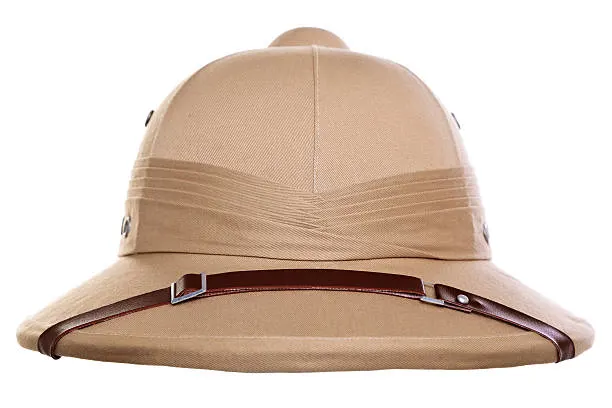
Pith Helmet or Safari Hat
The Pith helmet (or Safari hat) is a classic design that is nowadays a symbol and commonly seen used by our United States Postal Service workers.
The style is defined by a gently downward sloping brim all around, a medium to high crown, and a center dent crown style.
Many variations of the style exist from the stereotypical version seen at the right to the cloth-covered more ornate versions that have been used by explorers and militaries of days past.
The term “Pith” comes from the material they were originally made from which is a tissue in the stems of vascular plants but they are also made of cork and in present-day many other materials including even toyo (or paper).
Pork Pie Hat
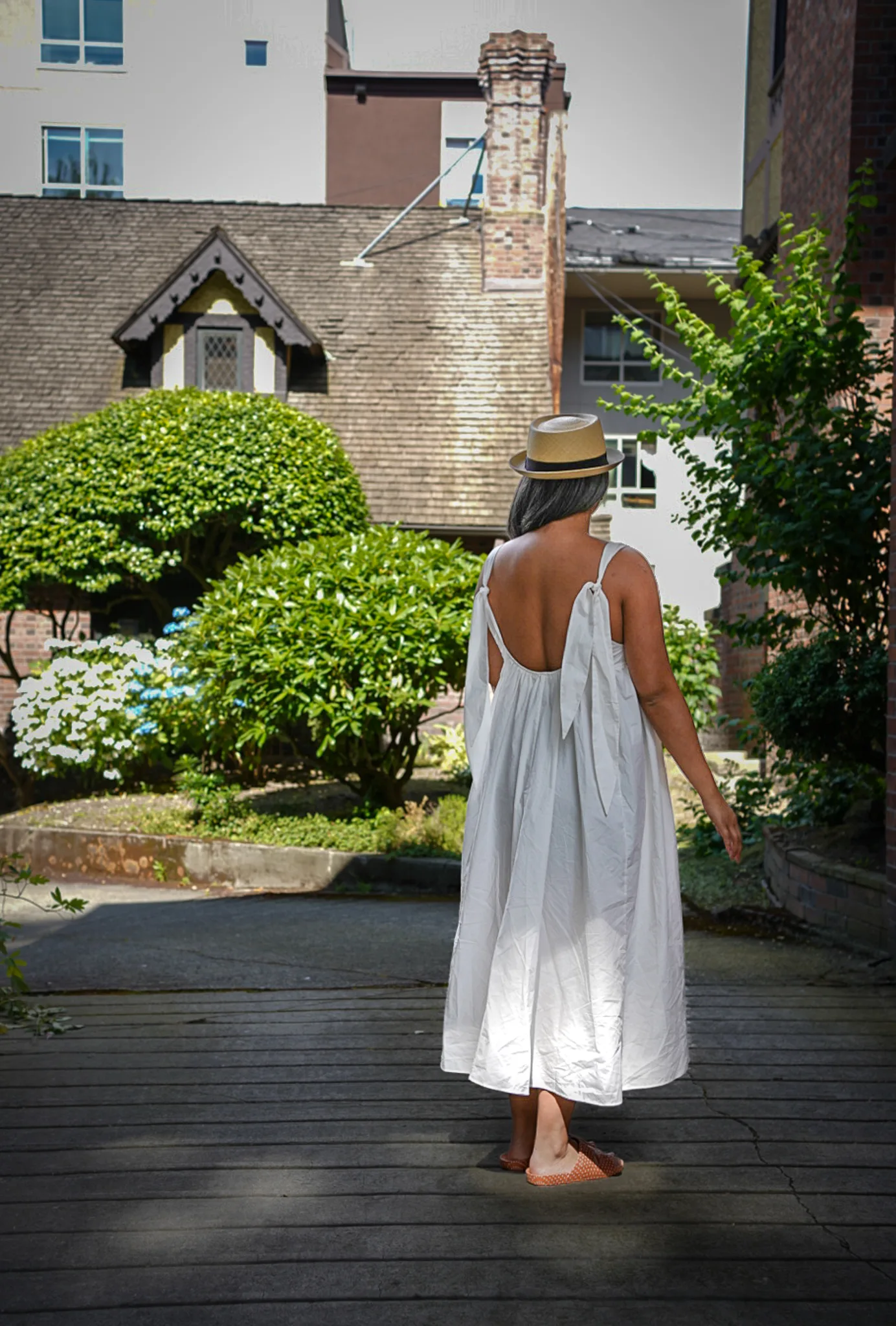
Trendhim Porkie Pie Hat
The pork pie is a stylish hat typically worn today by the more fashion-forward. It has recently seen a rise in popularity due to the show Breaking Bad since it is the trademark hat of the main character Walter White. It is primarily characterized by the crown shape, which is a flat-topped oval with an oval indention that defines the shape. This style can have a medium brim but most often has a very small brim, called a “stingy brim” and can be called by this name. The “Stingy brim” term more often now just refers to the brim size however and is used to describe other styles with a short brim as well.
Popular brands with Pork Pie hats: American Hat Company | Gigi Pip | Lack of Color | Peili Hats | San Diego Hat Company | Trendhim
Poke Bonnet
A Poke bonnet has a brim projecting so far out that vision to the side is partially obscured. They were popular from 1795 – 1850.
A type of bonnet was worn by the Quakers and a cotton example evolved as the “Sunbonnet” and was worn by early pioneers.
Race Hat
Race hats or derby hats are the big ornate styles that you see on the opening days of the horse races. They can also be called derby though it is a contextual term because it is more traditionally associated with bowler hats.
Raffia
Raffia comes from the segments of the leaves on the Raphia Farinifera palm (commonly known as Raffia Palm). Different species of raffia palm can be found around the world in parts of South East Asia, South, and Central America, with the very best flourishing in the coastal valleys of Madagascar.
Raffia is a popular and sustainable hat material.
Popular brands with Raffia hats: Augustine | Gigi Pip | Lack of Color | Peili Hats | San Diego Hat Company | Wallaroo
Rain Hat
A rain hat is a waterproof hat specifically intended to keep the head and hair dry. They typically have a tight crown and a wide or flipped-up brim to keep the rain off the face. Most tie under the chin to secure the hat to the head during windy, rainy weather.
Popular brands with Rain hats: lululemon | Rainraps | Under Armour
Raw Trim
Raw trim refers to the unfinished edge of a hat brim. It adds a fashion detail to your hat and can be made from any material.
Riding Hat
When the Riding Hat first appeared several hundred years ago it was a fashion accessory.
The first fashionable style was the top hat, which was invented in 1797. It was primarily worn by fox hunters and is still worn for dressage. The bowler (or derby), with its hardened felt shell and round crown, came into fashion in 1849 and gained popularity in post-Victorian England, both for its style and its practicality.
The next major development in riding hats concerned safety for the riders. These helmets were usually hard domed shells with small bills covered in velvet or velveteen. Chin straps were later added for safety. The modern helmet has continued to evolve with improved safety features.
Milliners were inspired by these sporting hats in designing and producing their own versions as pure fashion accessories, thus coming full circle.
Safari Hat
See Pith Helmet.
Sculptural Hat
Sculptural Hat – The term sculptural can be applied to many different hat styles. By definition sculptural is usually three-dimensional and sculptural hats typically have bodies that have been manipulated into different shapes and forms or have attached components.
As an art form, hats may be described as sculptural by means of shape, materials used and in terms of proportion. From the headdresses of ancient Egypt to the tribal hats of Africa to the often Turkish-inspired creations of the Renaissance to the 1980s elaborate church hats and 1990s fascinators, these types of hats are part of our fashion history.
Some of the best examples of sculptural hats are found in the surrealist creations by Elsa Schiaparelli in collaboration with Salvador Dali, the mid-century dramatic turbans and cloches by Christian Dior and, later, Philip Treacy’s wildy inventive flights of millinery fancy.
Seagrass
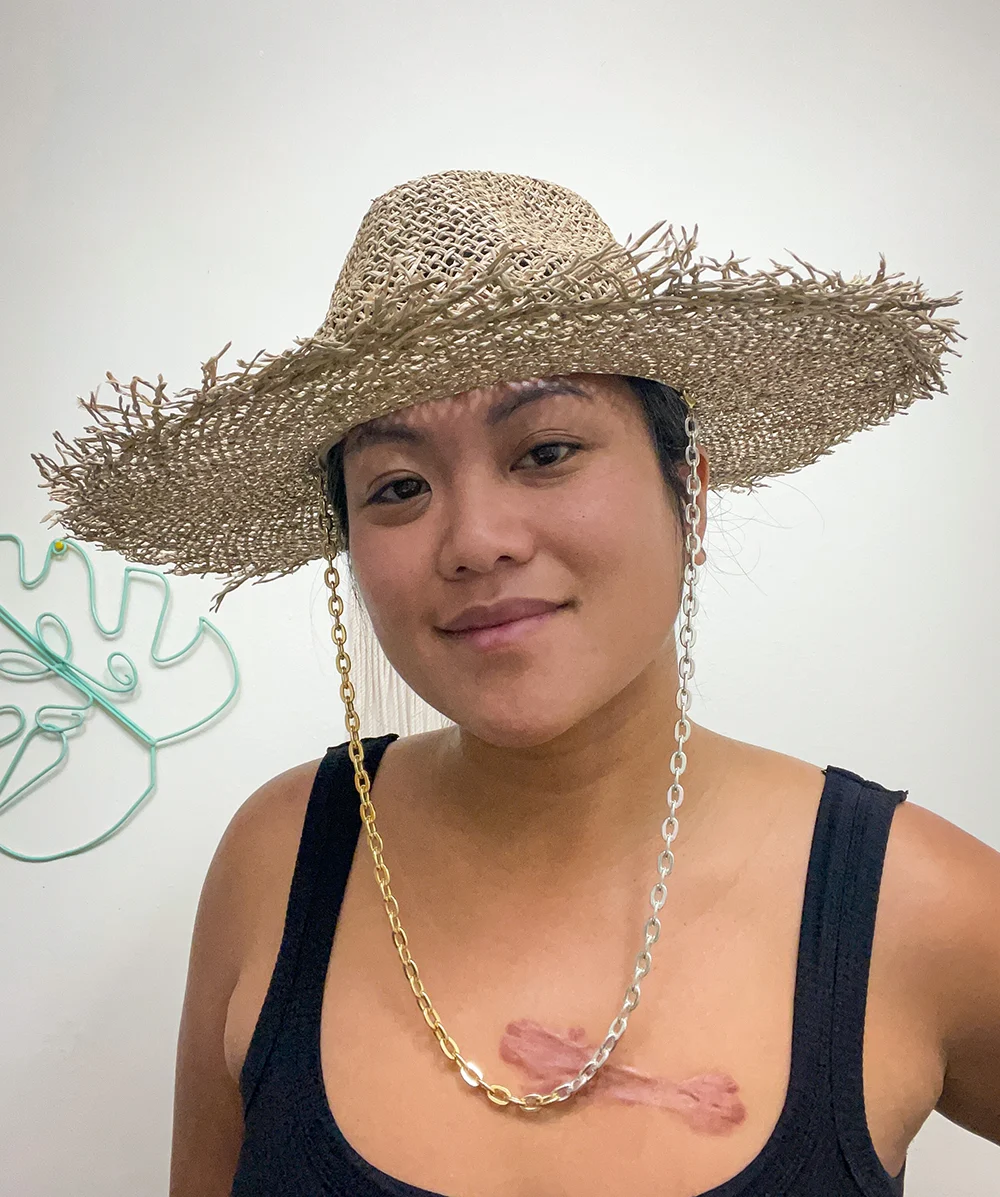
Seagrass straw hat with chain chin strap
Seagrass is made by weaving a yarn spun from the dried leaves of the seagrass plant which grows in many shallow coastal waters around the world.
It is not a true grass but the leaves are long, flat, and blade-like so the name has stuck.
It’s a sustainable material that is great for hat-making.
Popular brands with Seagrass hats: Gigi Pip | Lack of Color | Peili Hats | San Diego Hat Company
Skimmer Hat
See Boater Hat
Skullcap
The skullcap is a close-fitting, rounded, brimless hat that fits securely to the crown of the head. It can be made from velvet, wool, or from crocheted or knitted fabrics.
They may be worn as a fashion accessory, as ski wear, or, in slightly different form, for religious observance.
Slouch Hat
The slouch (Garbo, sportster, or ladies’ fedora) hat became popular in the 1930s and remained so through the 1940s. It is similar to a man’s fedora, but with a shallow, indented crown and a more-flexible brim. Slouch hats were a casual, daytime style worn with coats or suits, and typically tilted to the side of the head in a sporty fashion.
They were typically made of wool felt but some summer straws have been seen.
Snapback Hats
The term “snapback” is used when the cap can be adjusted using two plastic pieces that snap together at the back in a variety of lengths.
Snood
A snood is a loosely woven net to contain the hair at the back of the neck.
It descends from medieval hairnets made of gold and scattered with precious jewels.
Mid-Victorian women of the 1850s and 1860s wore crocheted versions, often made at home. Snoods covered the hair at home as well as outdoors beneath the bonnets and small, round hats of the time.
In the 1940s, snoods regained popularity when many women employed in factories during WWII used them to safely secure their long hair while working. The style soon became so fashionable it was adopted for dressy occasions. Lilly Daché even offered a snood at the time.
Sombrero
Sombrero is a Spanish word that literally translates to “shadower.” It’s also the generic word for a hat in Spanish. The sombrero features a tall, pointed or slightly rounded crown and a very wide brim (to shade or shadow the wearer) with an upturned edge.
The Spanish brought their flat-crowned version to Mexico and the vaqueros (cowboys) modified the design by adding a higher, very conical crown and a wider brim. Texas cowboys adopted the flat-crowned, wide-brimmed version from Spain.
Decorative versions were made of plush felt or velvet with elaborate embroidery on a saucer-shaped brim, and are typically associated with mariachi musicians of Mexico.
It also ironically looks like a taco, a popular dish in Mexico.
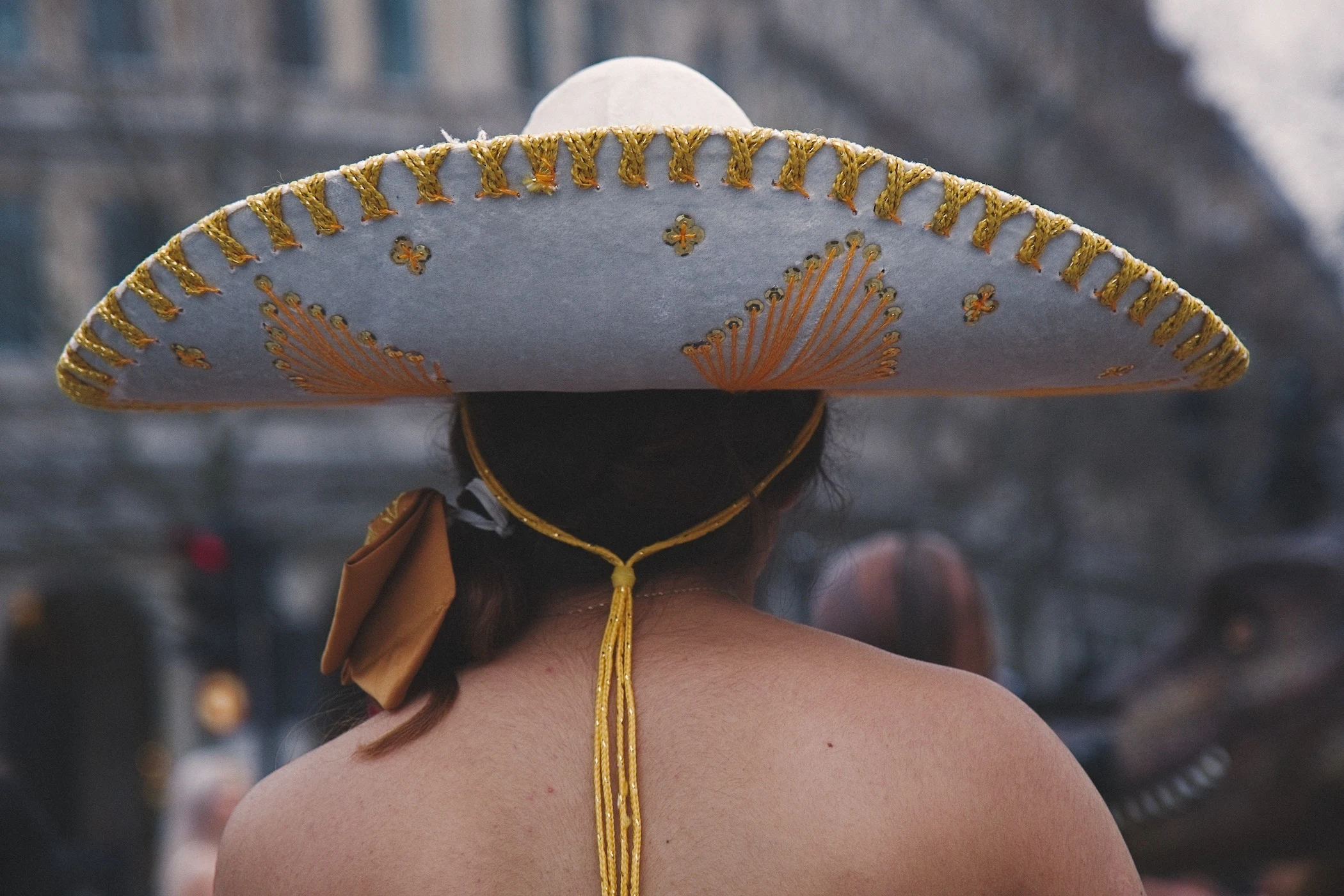
Mexican Sombrero Hat
Sou’wester
The sou’wester was originally a seaman’s protective hat of waterproof oilskin or leather. The traditional sou’wester tied under the chin and had a deep crown and flaring brim (often longer in the back) that provided shelter from the elements.
It made its way into women’s fashion via the semi-functional yachting and outing hats of the late 19th and early 20th centuries. In later decades, the fashion hats inspired by the original silhouette did so within the prevailing style of their time.
For example, the sou’wester of the 1920s (created by designers such as Agnes and Molyneux) might be a close-fitting cloche, brimless in front but hanging down to wrap the neck in back, or it might be one which, while it stopped at the nape of the neck in back, deeply hooded the face with an enormous, flaring brim.
In the mid-1930s, the sou’wester-style brim on one saucy little hat shaded the eyes with just a few inches dipping down from the shallow crown. The sou’wester-inspired hats of the mid to late 40s had wide brims, which rolled or were pinned back from the forehead. The early 1950s sou’wester profile brim prettily framed — and fully exposed — the face.
Stetson Hat
See cowboy hat.
Straw
Popular brands with Straw Cloche hats: American Hat Company | Gigi Pip | Lack of Color | Peili Hats | San Diego Hat Company | Wallaroo
Sun Hat
Popular brands with Straw Cloche hats: American Hat Company | Gigi Pip | Lack of Color | Peili Hats | San Diego Hat Company | Wallaroo
Sweatband
The sweatband bow is found on the inside of men’s hats. Attached to the inside, back seam of the sweatband.
Easy for men to tell which is the back of the hat when putting it on quickly.
Rumor has it that the inside sweatband bow resembles skull and crossbones. Making it is a nod to past milliners who were stricken with mercury poisoning by prolonged exposure to mercury vapors during the felting process.
Tam
The tam hat has increased in style as of late and can be found in many varieties. The base for it however is a loose fitting, crocheted weave style beanie hat that is worn off the back of the head. Aside from some men with dreadlocks or longer hair, this is a style that is usually worn by women.
Tam-o’-Shanter
The tam-o’-shanter (tam for short) is a wide, flat beret with a headband and a puff tassel or pom-pom on the center top.
It originated in the Scottish military and has become a unisex fashion hat.
Tiara
A tiara is a jeweled crown or headpiece traditionally worn for formal occasions.
Tiaras were originally worn by kings in ancient Persia and evolved in Greece and Rome as golden wreaths encircling the head.
Jeweled tiaras for women were revived in the late 18th century with the rise of neoclassicism. They reached great popularity with the Empire style of the early 19th century.
In the late 19th century, tiaras became popular not only with royals but also among wealthy society women.
By the 1920s, flappers were wearing tiaras and tiara-inspired headbands. They became best known for crowning beauty pageant winners.
Tilt Hat
Tilt hats were popular in the 1930s and 1940s. They were worn at an angle and held to the back of the head by a strap, rigid ring, elastic band beneath the hair, or a combination of these. Very small toy or doll hats typically did not have a head-hugging strap feature.
Top Hat
The top hat is another iconic style that today is more often used as novelty or in an extremely formal situation. The two main distinguishing features are a large crown that is sometimes convex, and a short to medium brim. Aside from these, there are many variations on the style.
The top hat is often referred to as a stovepipe hat, high hat, silk hat, tall hat, topper, or opera hat. The top hat generally has a very tall cylindrical crown with a flat top and a flat or curled brim. It is the classic headwear choice with formal day and evening clothing.
The top hat is most often seen in black silk but it can also be found in gray for wear with formal day clothing.
The top hat has a rather unique history: as the story goes, the first man in England to wear a top hat, a haberdasher by the name of John Hetherington, was arrested in 1797 for daring to wear such a ‘scandalously preposterous’ piece.
Top hats were customarily made of silk plush which required a special shellac finish made from the droppings of certain insects found only in India. Today, no manufacturers of such silk plush remain, and modern top hats are most often made of velvet, wool, or silk.
The collapsible version of the top hat is called an opera hat (or gibus); it collapses into a ‘pancake’ shape in order to be easily stored in a narrow tray under an opera seat.
A popular men’s hat style from the late 18th century to the mid-20th century, this topper is most associated with Abraham Lincoln and Uncle Sam.
Toque
The toque is a brimless, close-fitting hat worn high on the head. In French, it describes the tall, white, puffed-top chef’s hat. Today, toque refers to a beanie hat.
The toque was popular in the Renaissance, in the 1890s, and with many different style variations throughout the 20th century.
Toques are often adorned with laces, beading, and feathers.
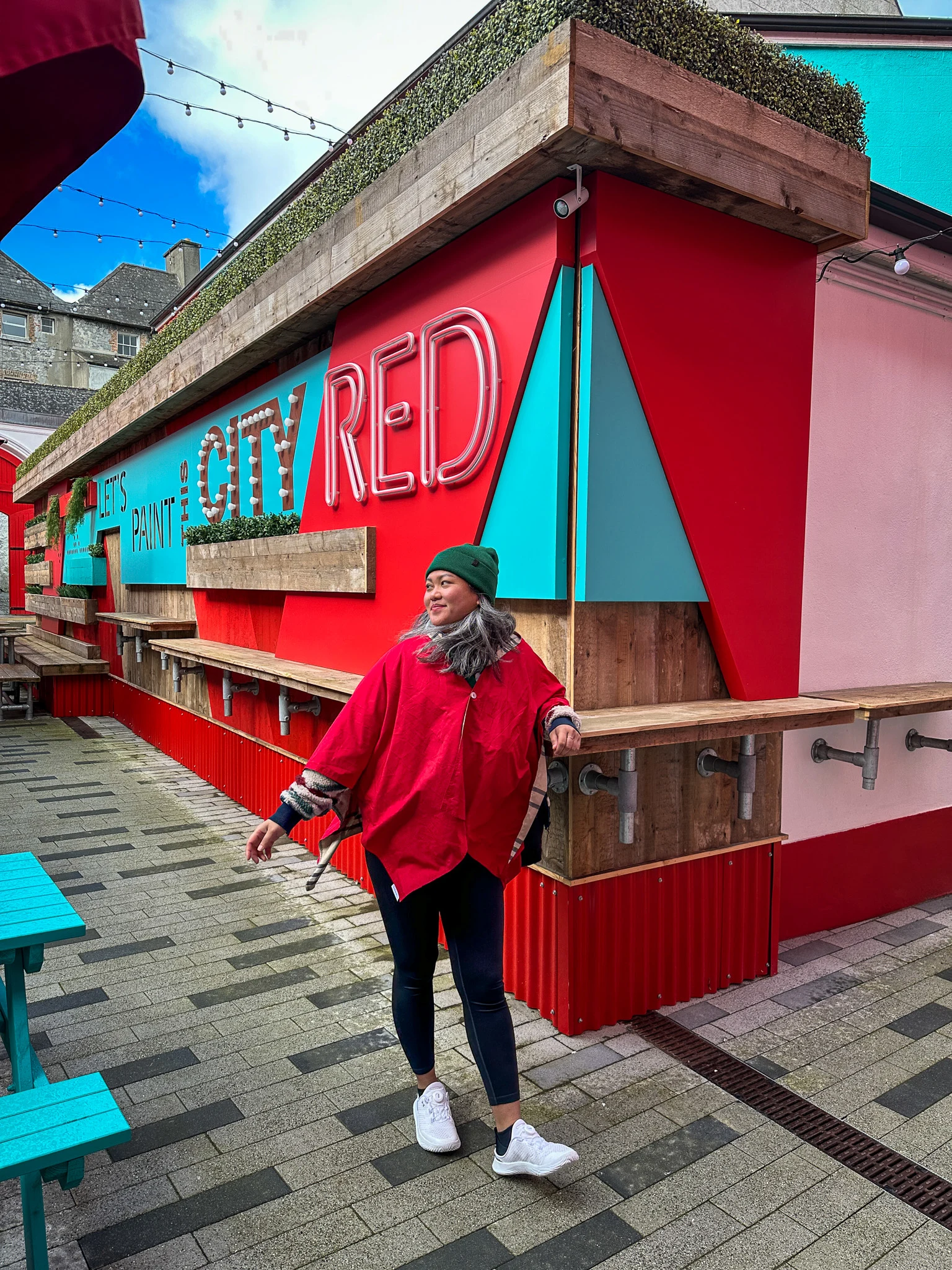
lululemon Toque
Toquilla Straw
A type of straw from Ecuador from the leaves of the Carludovica palmata plant, otherwise known as the toquilla palm or jipijapa palm. It’s the only type of straw used in the creation of authentic Panama hats.
Toy Hat
The toy (or doll) hat is characterized by its small size. It perches toward the front of the head, sometimes at a tilt, but never comes down over the head. Popular in the 1930s through the 1940s, toy hats can be embellished in many different ways. They always have an exterior band and/or interior combs for securing them to the head.
Toyo Straw
A type of shiny, smooth straw, usually from Japan, made with shellacked rice paper.
Trapper Hat
The trapper hat is a type of winter hat with ear flaps. The ear flaps can be tied up or buttoned on the crown, or left down and tied under the chin.
When the ear flaps are left down, they protect the ears, chin, and jaw from harsh cold weather.
Trapper hats are often made entirely of fur, such as the Russian Ushanka, or they can be made of wool, leather, nylon, fabric, etc., and lined in fur for added warmth.
Trillby Hat
The Trilby is similar to the fedora in shape and style with the exception that the brim is quite short or stingy. Trilby and fedora are commonly exchanged terms when talking about the styles so you will usually find what you are looking for when asking for either of these styles.
Trucker Cap
The trucker cap is like the baseball with the exception that it is all mesh except for the front two quarter-panels. It usually has a snapback (see term below) adjustment.
Popular brands with Trucker hats: American Hat Company | Gigi Pip | Goorin Bros| Lack of Color | lululemon | San Diego Hat Company
Turban
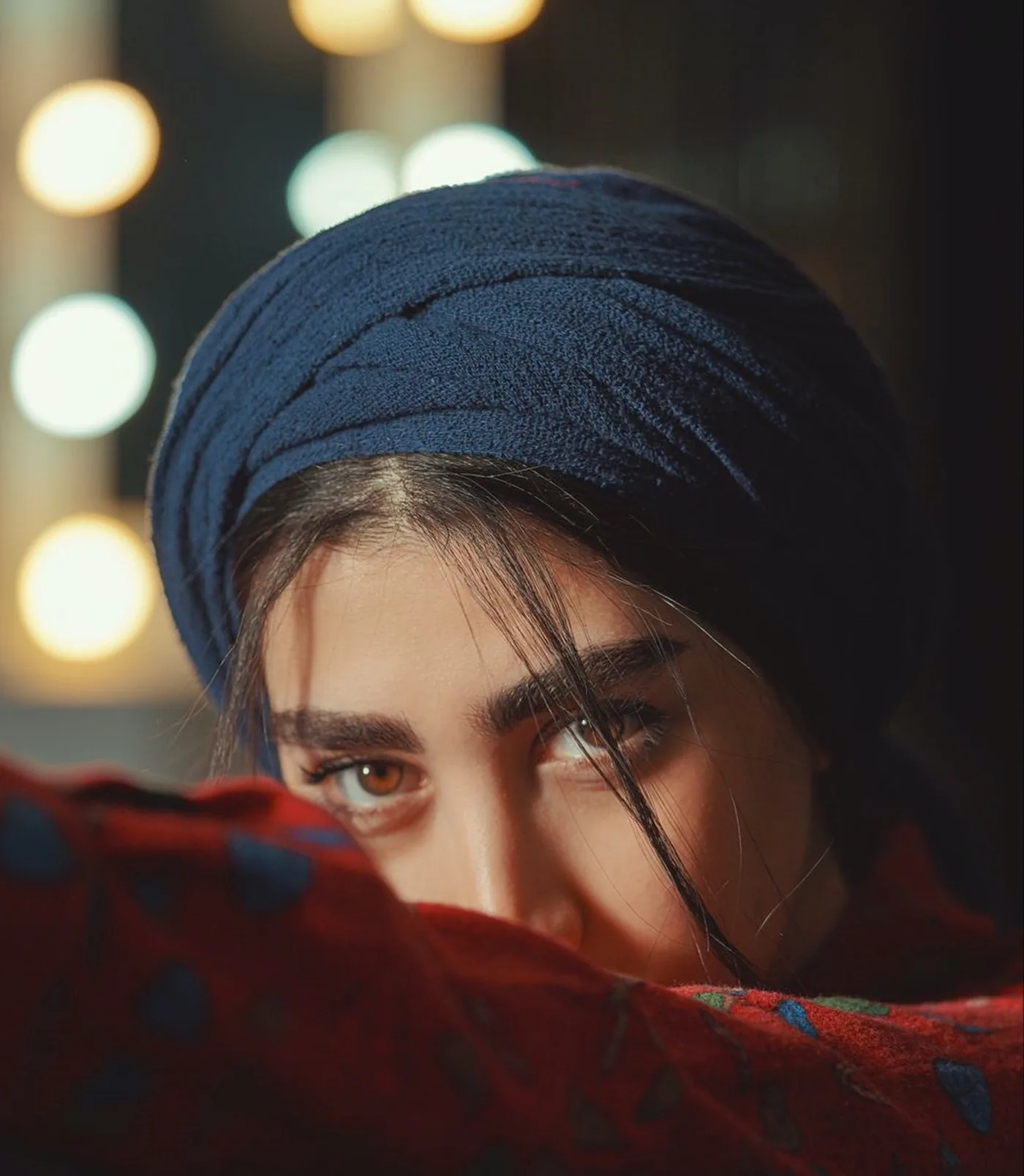
Blue Turban
Traditional turbans date back to the 1st century, with yardage of fabric wrapped so as to cover the head. Originally worn by men, the style was adapted by modern women of the 1940s.
One main identifying feature of the turban is the ability to completely or almost completely cover the head. They are almost always crafted with fabric, sometimes a solid piece but mostly wrapped.
Up Brim
A Kettle-brim hat is a women’s style and though the name may not sound familiar, it is a hat most everyone has seen. They have a simple, yet classic look and can be made in any material. The style is distinguished by a symmetrical circular shape, a short to medium brim that has a half to one-inch upturn at the edges, and a rounded crown. Often they are accompanied by a bow, or a ribbon around the crown and can have chinstraps as well.
UPF / Sun Protection
An acronym for Ultraviolet Protection Fabric.
UPF is the benchmark used to measure the effectiveness of sun-protective fabrics against both UVB and UVA rays. Hats that incorporate UPF are becoming very popular.
UPF is dependent on a few factors. These factors include the weave, color, weight, stretch, and wetness of the material. Additionally in order to achieve ultraviolet protection, fabrics are sometimes treated first with a protective material and then it is up to the other factors to determine the actual UPF rating.
For example, a feature can be brims that incorporate a metal wire that allows you to augment the shape of the brim in any way you choose to receive the most possible sun protection.
Veil
A veil is a piece of cloth that covers the head and/or the face. It can be opaque, semi-sheer, or sheer and is mainly worn by women.
The veil is mentioned in ancient texts such as the Bible and Assyrian writings, which mention its use by noblewomen. Veils are also depicted in classical Greek sculpture and Roman women wore veils to symbolize their husbands’ authority. Anglo-Saxon and Anglo-Norman married women wore veils covering the entire head and neck up to the chin. This type of veiling became less common during the Tudor period as hoods became more popular.
Sheer veils have been worn for many years as symbols of mourning, often draped over and pinned to hats. Veils have also been worn to hide the identity of women travelers or as elements of film noir to add mystery to the femme fatale character. They may also be used to protect the hair and skin from sun, wind, and dust.
Probably the most common use of veils is during weddings, to symbolize a bride’s purity. Lifting the veil after exchanging vows ceremoniously reveals the bride’s beauty not only to her groom but also to the guests.
Veils on hats have of course been common for many centuries and are still worn today. This type of veil is typically made of a sheer netting and is not meant to hide the face, even if it is worn down over the face.
Visor
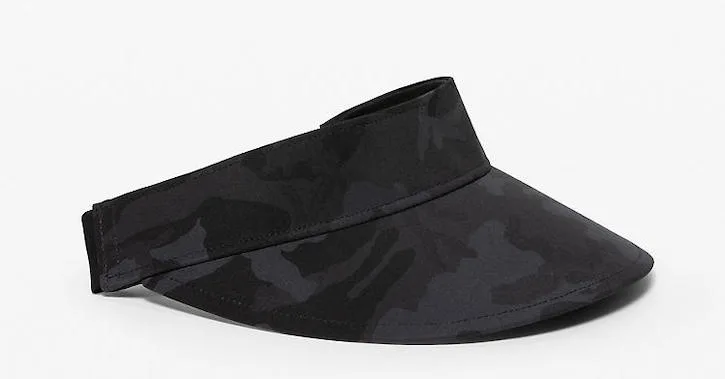
lululemon Fast Paced Visor
The visor is a great style that is coveted for its simplicity and packability.
The only real criterion for a visor is that the top of the head is uncovered and that there is a bill or brim. Essentially, it’s a hat without a crown.
There are now full brims that look like donuts and 3/4 brims where there is a split in the back of a woman’s hair.
Popular brands with Trucker hats: Eugenia Kim | Gigi Pip | Lack of Color | lululemon | San Diego Hat Company | Wallaroo
Western Hat
See cowboy hat.
Popular brands with Western hats: American Hat Company | Gigi Pip | Lack of Color | lululemon | San Diego Hat Company
Whimsy
A whimsy hat consists of an embellished veil that covers the head. Typical trims include flowers, feathers, fruit, ribbons, and bows. This style was meant to complement the 1950s and 1960s bouffant hairstyles.
Wind Trolly
The wind trolly is the elastic cord and button sometimes seen on mid-20th century through contemporary men’s hats. It is used to tether a hat to the wearer’s head and neck in the event that is knocked off by a strong wind.
When not in use, the cord wraps around the crown of the hat. When loosened, the button end can be secured through the buttonhole of a coat or jacket lapel.
It was often added at the request of the customer at the time of purchase.
Wool
A natural fiber that is shorn directly from a sheep’s coat and spun into yarn. Wool is used to make a variety of products including clothes, hats, socks, and more.
Wool Felt
A material used to make many hats such as the fedora. Wool felt is produced by using heat, moisture, and pressing wool fibers together.
Thank you for visiting today! If you found this encouraging or informative, please connect with us on Instagram or TikTok. Sign up for our monthly newsletter for updates and more. We promise we won't spam you! Feel free to unsubscribe anytime. If you're a brand and want to work with us, please visit this page to get in touch.

